Categories
Subjects
Authors
Artists
Venues
Locations
Calendar
Filter
Done
April 12, 2024 – Review
Emanuel Proweller’s “Un souvenir de soleil”
Ren Ebel
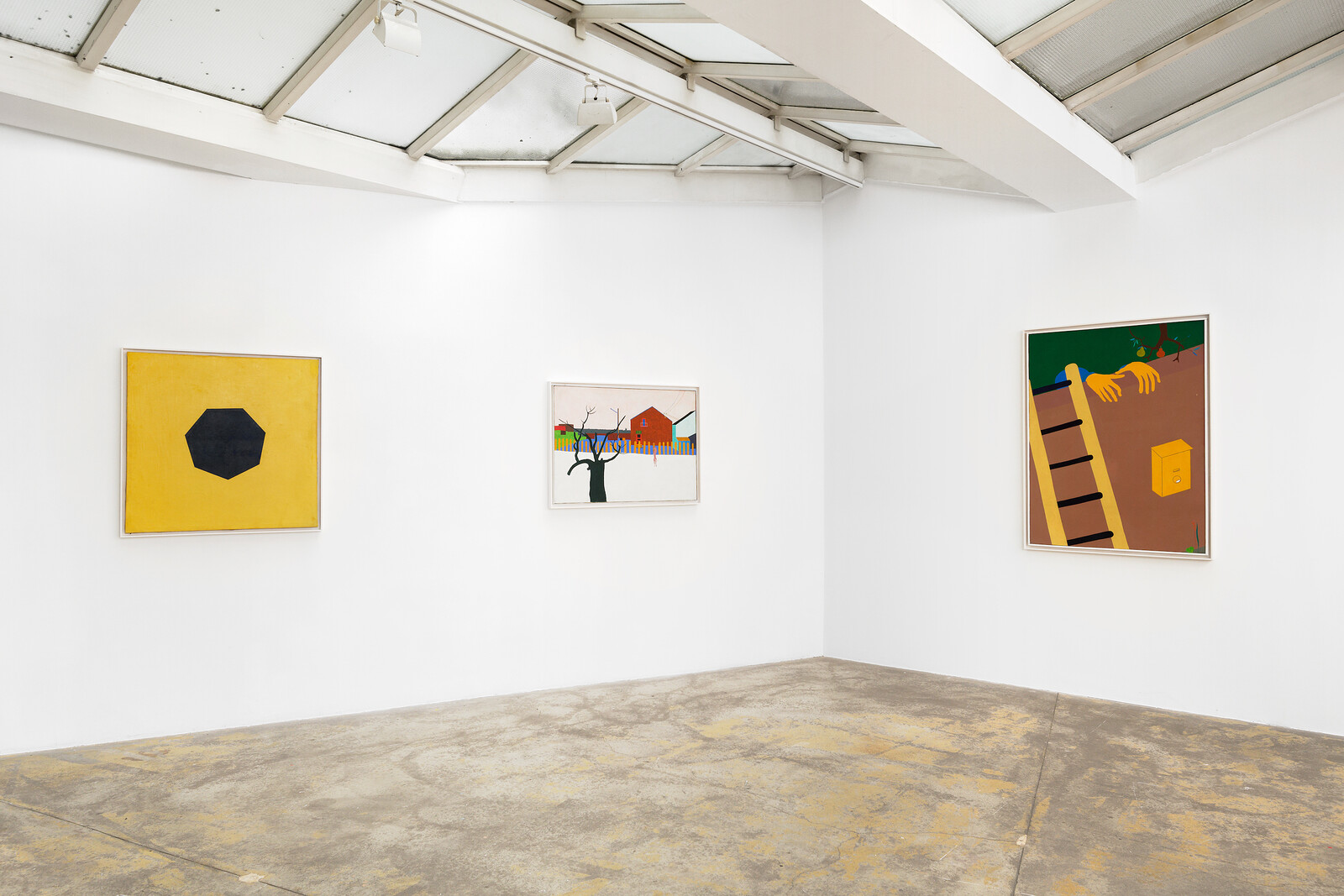
Having survived first the Holocaust and then three years’ conscription in the Red Army, the Jewish-Polish painter Emanuel Proweller later said of his identity that it felt like “a jacket with a reversible lining.” The same analogy might be applied to Proweller’s paintings which, though unmistakably his own, routinely dress up in the various styles the artist encountered after moving to Paris at the end of the 1940s. Pilfering and distilling motifs of Fauvist landscape, Cubism, Hard-edge abstraction and proto-Pop appropriations of commercial graphic design, Proweller pursued striking, radioactive syncopations of color.
Taken together, the paintings in this survey map a progression from strict geometrical abstraction to a more confident and eclectic mode in which Proweller’s dynamic planes of color begin to serve as set pieces for more recognizable forms. Often, these are laconic bodies or quotidian objects, sights from Proweller’s home in Créteil, on the outskirts of Paris, or his countryside studio in Ardèche. But the artist’s move toward figuration was less a means of representing his world than an opportunity for his colors to encounter one another at increasingly complex and unexpected boundaries. In Au bois de Chaville [In the woods of Chaville] (1974), sky blue and viridian …
December 13, 2023 – Review
Henry Taylor’s “From Sugar to Shit”
Novuyo Moyo
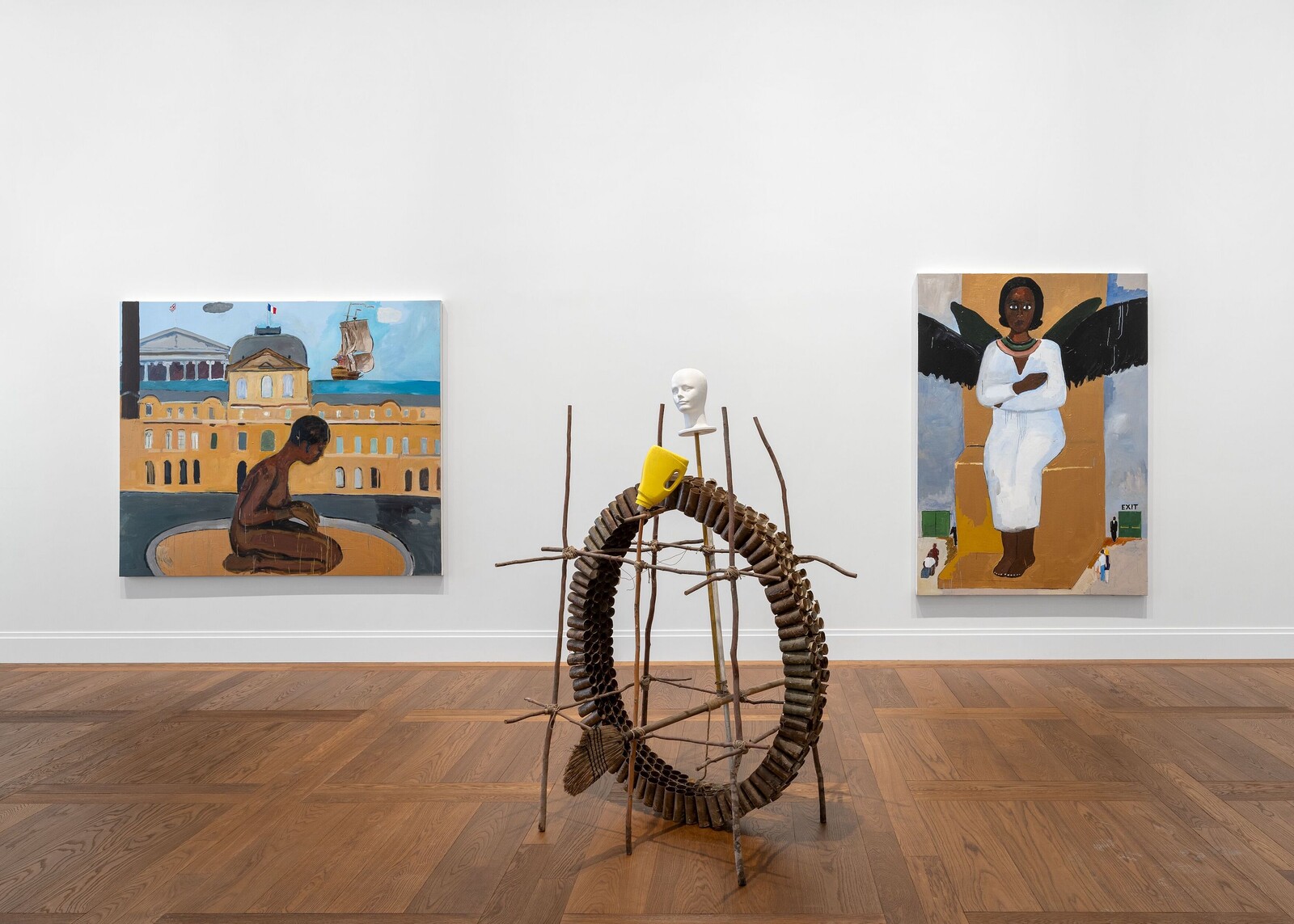
The people in Henry Taylor’s paintings are usually surrounded by slabs of color, a graphic sensibility he shares with his high school peers and alternative comic book artists Los Bros Hernandez, whom he credits with setting the bar for his work. “I always thought, ‘Damn, they draw so much better than I.’ So I started just practicing my draftsmanship because of them. They intimidated me.” Taylor worked for ten years as a technician at Camarillo State Mental Hospital while studying at CalArts, providing assistance to some of the area’s most vulnerable people and at times featuring them in his drawings and paintings, developing the empathetic lens through which he would continue to frame his subjects.
Set in Hauser and Wirth’s Parisian multi-story outpost, and consisting of works made between 2015 and 2023 (the most recent made during a stay in Paris over the summer), “From Sugar to Shit” connects past and present, interior and exterior, public and private. Taylor’s subjects range from famous faces to personal acquaintances, but his frank, inquisitive approach sees both groups as equally worthy of commemoration. It’s not always clear whether he works from memory, archival materials, a live sitting, or a combination of these, but …
November 29, 2023 – Review
Lisa Brice’s “LIVES and WORKS”
Louise Darblay
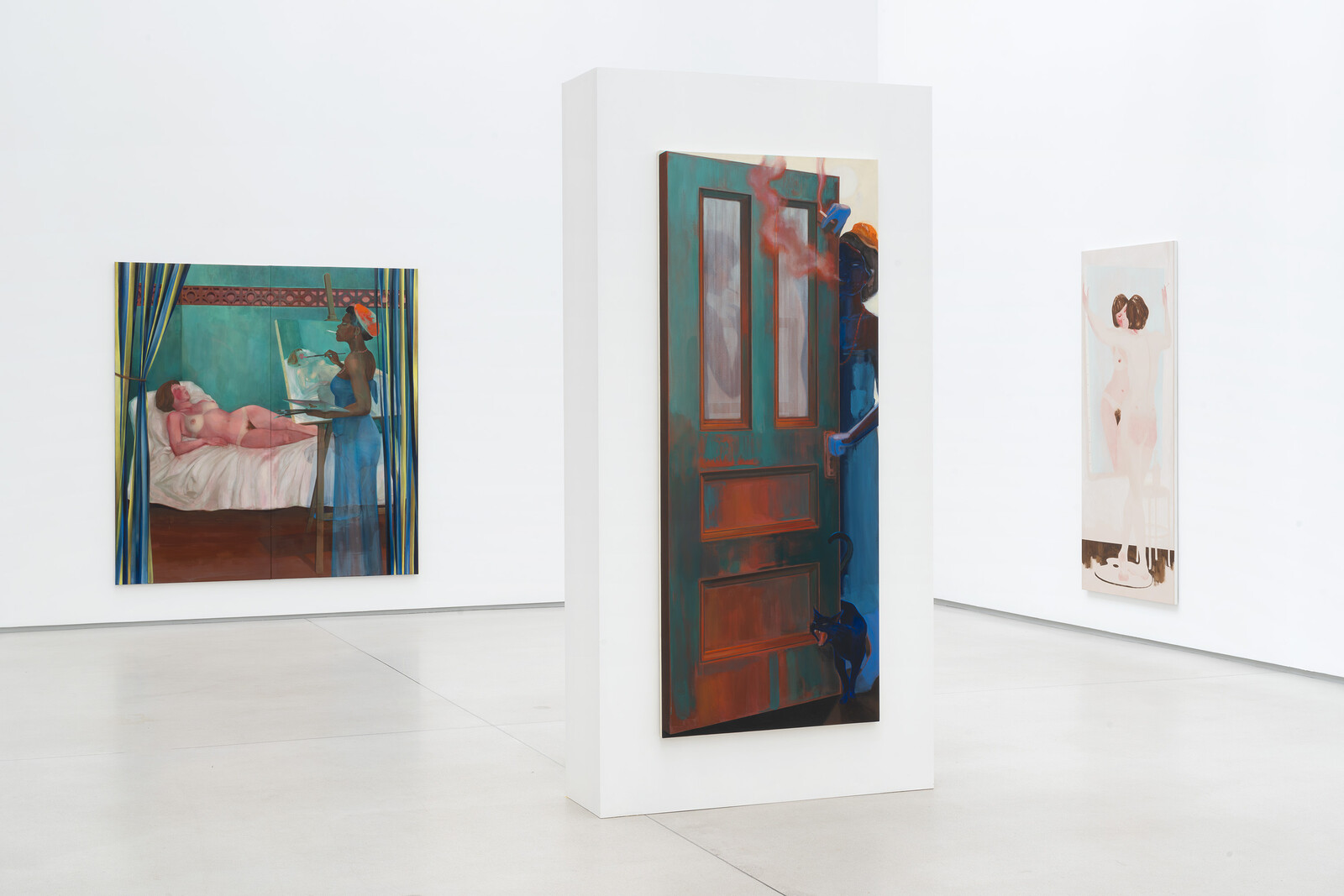
“Men look at women. Women watch themselves being looked at,” goes John Berger in his classic BBC show Ways of Seeing (1972), his big blue eyes staring intently at the viewer while he demonstrates the impact of centuries of male gaze—from canonical paintings to contemporary advertising—on the way women perceive themselves. “The surveyor of woman in herself is male: the surveyed is female. Thus she turns herself into an object of vision: a sight.” In Lisa Brice’s paintings, which wander the corridors of western art history, women look at themselves, but no longer through this mediated perspective: the muses, models, and mistresses come to life, turning from passive objects into active subjects, becoming the authors and surveyors of their own image.
This new series by the South African artist, presented on the ground floor of Ropac’s Marais space, bristles with punkish energy. Two large, cinematic canvases mirror each other on opposite walls, their horizontal compositions drawn from Édouard Manet’s A Bar at the Folies-Bergère (1882). In the most obvious riff on his work, Untitled (after Manet & Degas) (all works mentioned 2023), the Folies-Bergère has turned into a women-only cabaret, populated by sexy and brazen dancers (including Manet’s sad-looking barmaid, …
November 22, 2023 – Review
Neïla Czermak Ichti’s “J’adore vous faire rire”
Natasha Marie Llorens
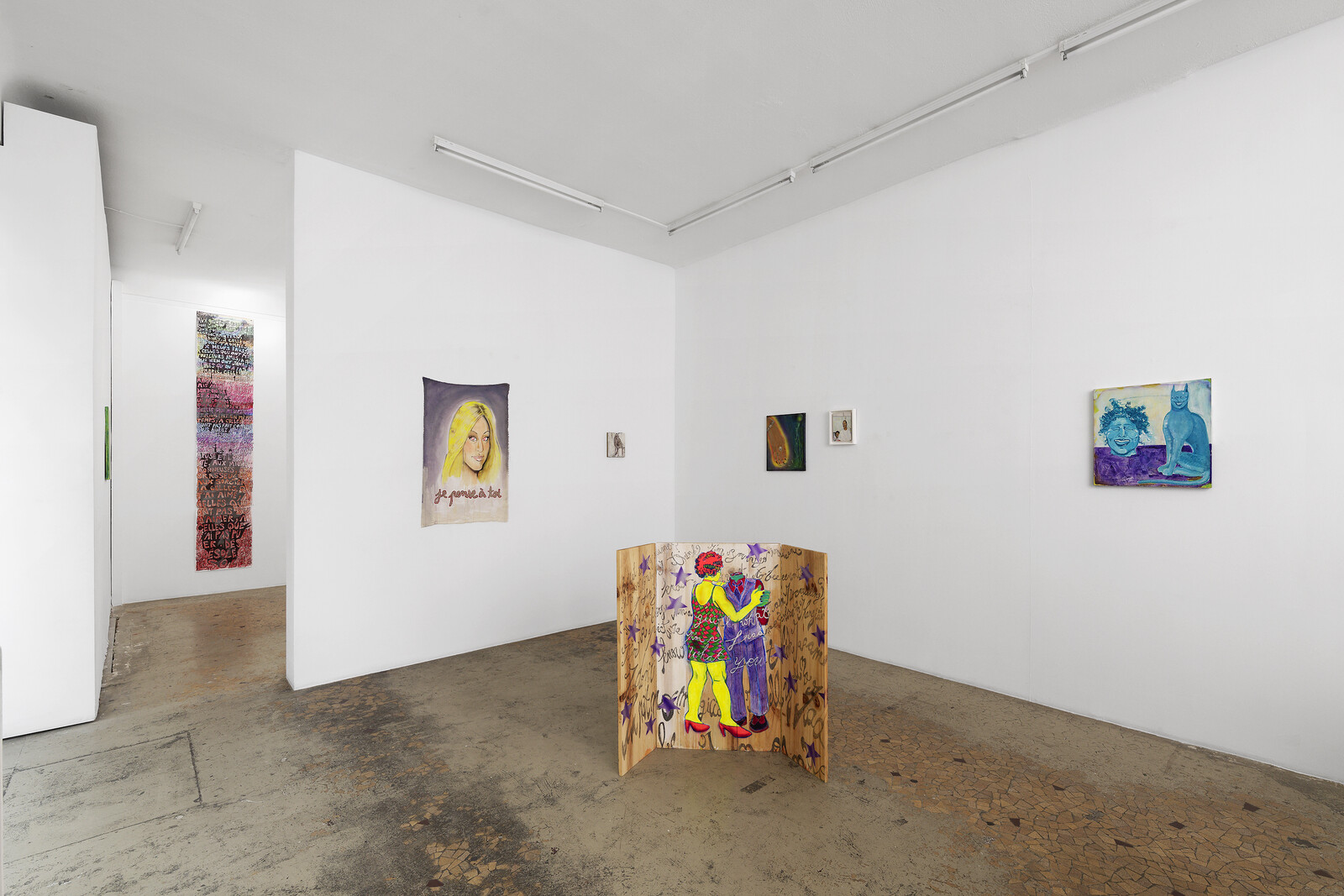
A diminutive and oddly classical homage to the eponymous character in Ridley Scott’s 1979 classic horror film Alien, entitled Bolaji resting between two takes (2023), is tucked into one corner of the front room of Anne Barrault’s gallery in Paris. The painting is small, the facture thick, with a palette in shades of white. The composition’s contrast is rendered in a warm maroon tone that reminds me of blood coagulating at the edges of a flesh wound. Despite this latent suggestion of violence, Franco-Tunisian artist Neïla Czermak Ichti’s portrait of the infamous being eschews the sexualized viciousness of its on-screen presence. Seated on a cheap plywood block, visibly marked by use, with its massive head resting on long, thin forearms, the alien just looks tired, like a construction worker on a fifteen-minute break.
Czermak Ichti became obsessed with Bolaji Badejo, the twenty-five-year-old Nigerian art student inside Ridley’s oppressive latex costume. She based the painting on one of only a handful of production photographs of the costumed actor between shots. Badejo was born in Lagos in 1953, immigrated to Ethiopia with his family in the aftermath of the Nigerian civil war (1967–70) and then to the UK. The one-time movie star …
December 15, 2022 – Review
Mungo Thomson’s “Sideways Thought”
Francesco Tenaglia

Mungo Thomson is a California-born conceptual artist in the lineage of John Baldessari and Ed Ruscha. His works often appear in serial forms that change over the years, adapting to different display contexts and making a virtue of repetition itself—framing, editing, and magnifying found objects and images from popular visual culture.
At the center of his solo presentation at frank elbaz gallery in Paris is a strong example of this tendency. Projected in the gallery’s darkened first room is Volume 5. Sideways Thought (2020–22). Part of the artist’s “Time Life” series of stop-motion animations that draw on encyclopedias and other sources of found imagery, the video consists of a montage of every photograph of Auguste Rodin’s sculptures available in books about the artist’s work. The idea is to mimic, or allude to, the operations of a high-speed scanner while transforming paper archives into digital databases for universities or research centers. Yet the breakneck speed of the editing also illustrates an artistic possibility: that an artwork can be generated from the processes of digital sublimation. Thomson’s use of ancillary documentary materials, and indexical and archival practices (those building blocks of art history), extend into Rodin’s desire to capture the naturally continuous …
December 9, 2022 – Review
Carol Bove’s “Vase/Face”
Orit Gat
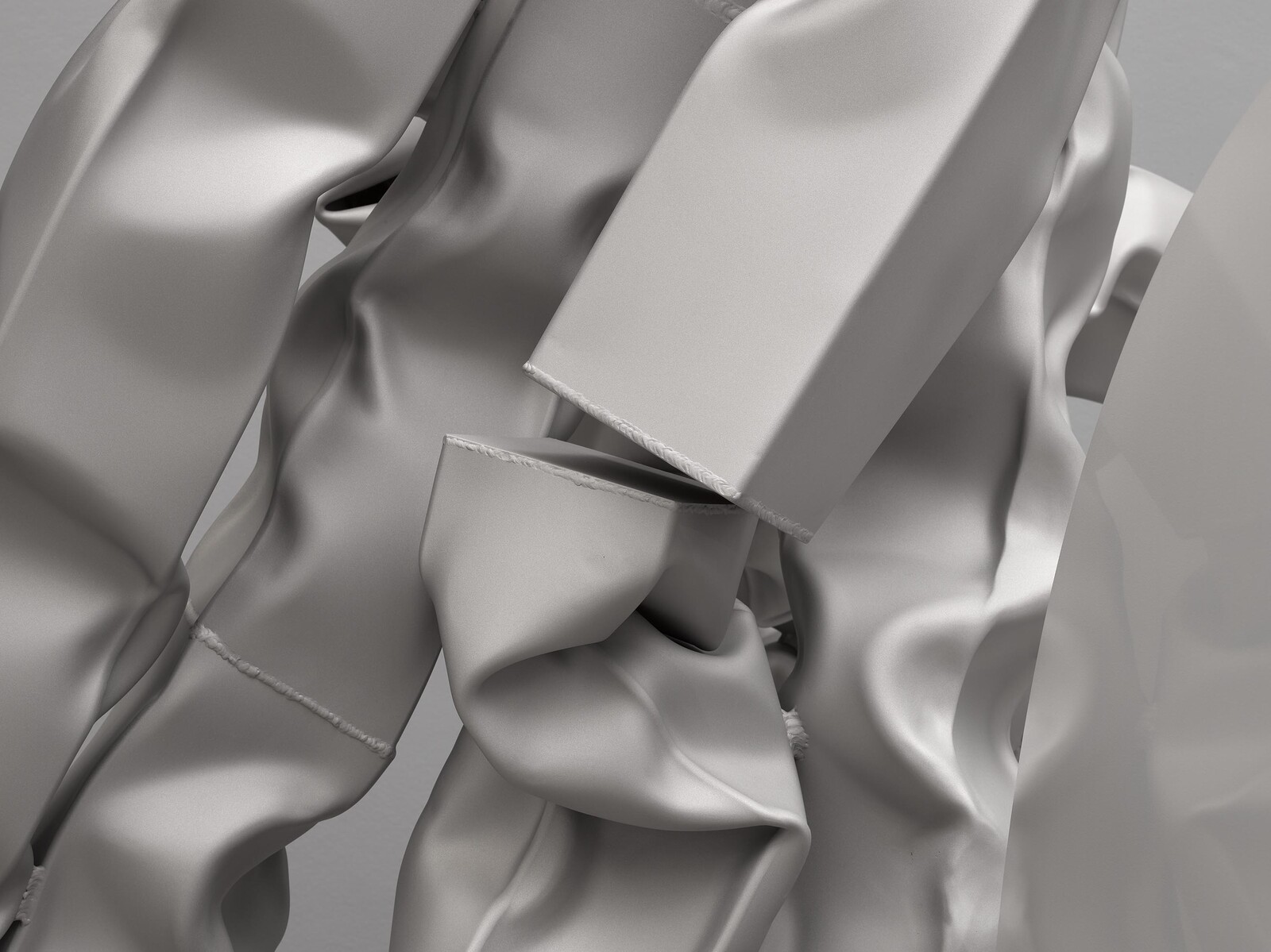
A friend once called me out for overusing “the viewer” in my writing. “What does this viewer stand for?” he asked, suggesting that to use an abstract generality as a stand-in for the self absolves the writer of having to account for their own presence. Initially I saw this as a comment about the politics of being a body in space; that viewers are not interchangeable, experiences matter, and they are distinct. This conversation convinced me that the personal can be a powerful position from which to reflect.
So, here goes: I stood in front of Carol Bove’s new sculptures at David Zwirner and related to them in a way that is intuitive and emotional, a way that made a specific viewer of me, one whose life seeps into the looking. Though they’re made of metal, I saw their softness. I kept staring at the meeting points of two bits of steel, and found in them a connection. Bove’s exhibition, “Vase/Face,” includes two sets of works presented across two rooms, two presentations that differ in scale, color, and treatment. In the main space are four large-scale sculptures made of stainless steel and laminated glass with heat-fused ink. The sandblasted stainless …
July 20, 2022 – Review
Daniel Otero Torres’s “Las huellas del viento”
Jayne Wilkinson
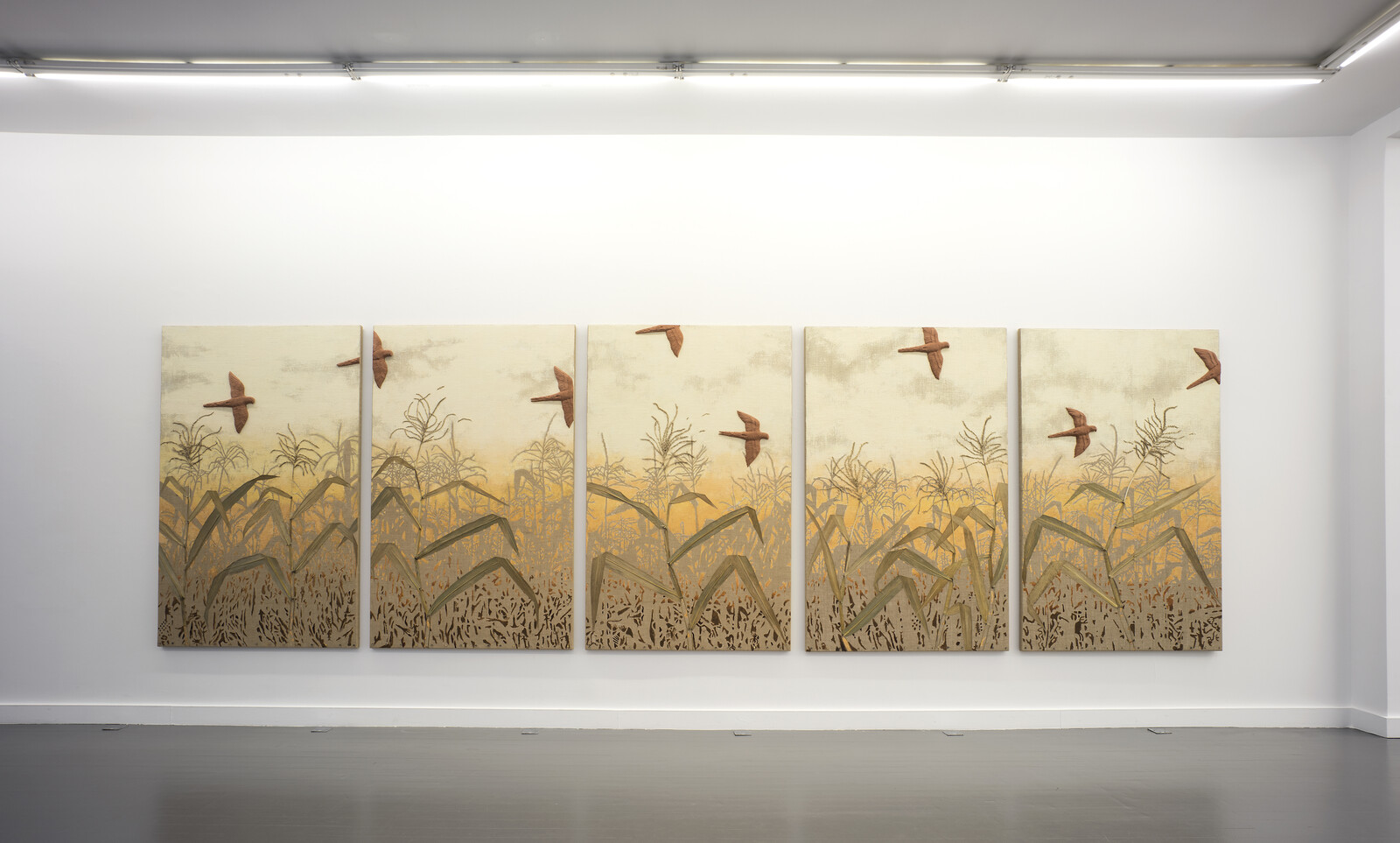
It’s a rare artist who combines deep research into histories of colonization with the technical draughtsmanship necessary for near-photographic expressive figuration. This is the kind of work for which Daniel Otero Torres—a Colombian artist based in Paris—has become known. His detailed, hyper-realistic drawings on large, flat sheets of steel or aluminum reproduce archival photographs by adjusting scale and composition to create the larger-than-life creaturely figures that populate his installations. Taking cues from archaeology, magical realism, and mythology, the works include many visual references that address pre-Columbian histories across Latin America. In his newest work for “Las huellas del viento” (the exhibition’s poetic title translates to “the traces of the wind”) Torres extends these concerns to the industrialization and financialization of nature, a complex topic handled here with nuance. The show comprises steel sculptures, a five-panel wall work, a hanging installation, and a series of ceramic vessels, with each group exploring a different natural commodity—bananas, corn, and poppies—that has been intensively mono-cropped and tightly controlled in order to produce corporate wealth rather than communal resources.
Bananas are one of the world’s most popular fruits, and not by accident. The United Fruit Company, a twentieth-century multinational corporation, is largely credited with developing …
November 15, 2021 – Review
“quelque part entre le silence et les parlers”
Natasha Marie Llorens
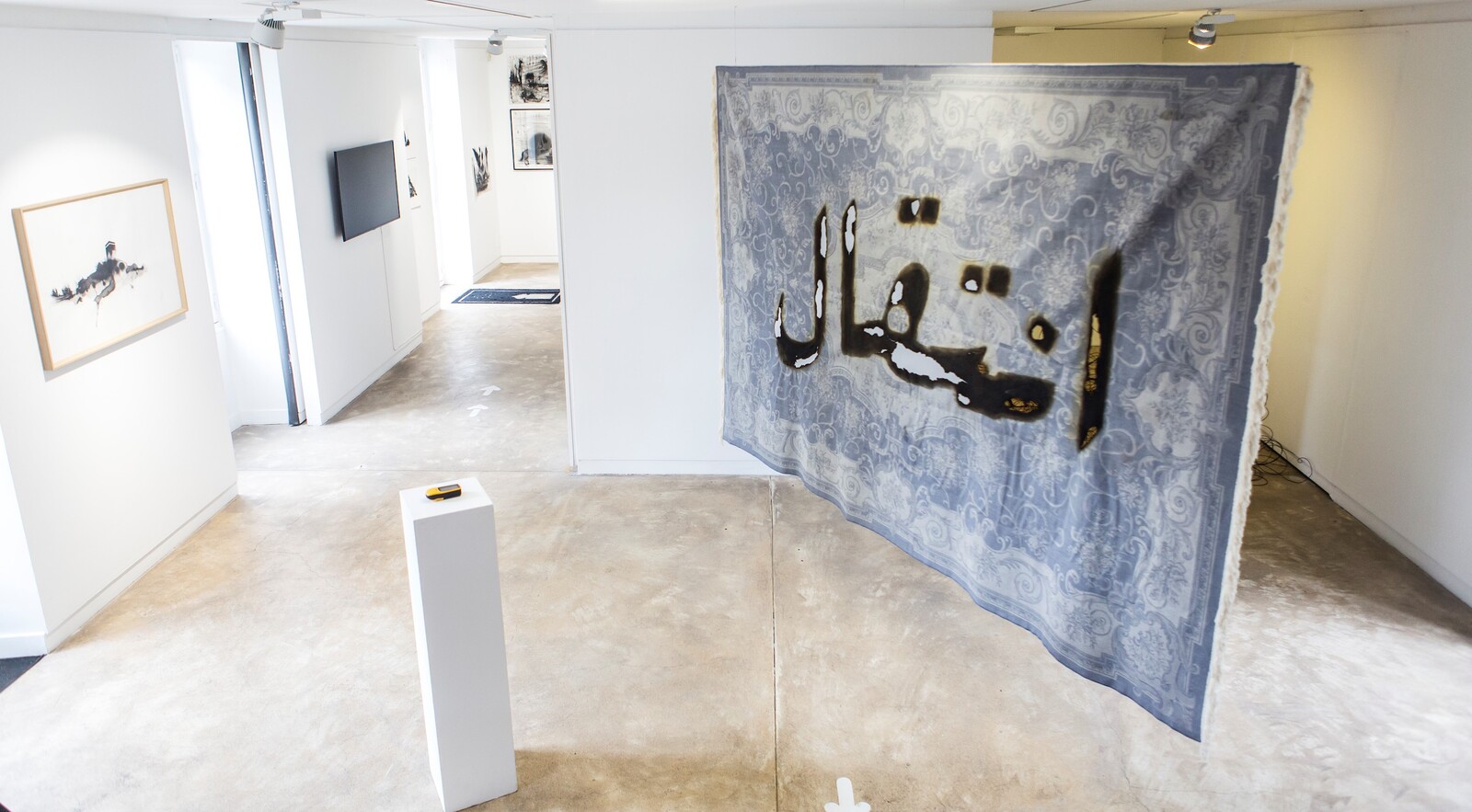
At the entrance to the Centre d’Art Contemporain de Malakoff on the outskirts of Paris, I am met with a mass-produced, generic “Oriental-style” rug into which an Arabic word has been burned, a word which transliterates to inteqaal. It can mean the movement of persons from one country or place to another, or the transition from life to death. It also describes the time when something ends, such as the end of a regime or the end of belonging resulting from immigration and exile. Oran-based artist Sadek Rahim burned the word into the rug—in some places straight through it—by dripping refined petroleum made from Algerian crude oil into its synthetic ground and then setting it on fire. The rug is part of Rahim’s installation Mouvement (2020), which encompasses a slim plinth standing in front of the rug with a GPS Garmin 73 device sitting atop it. This model is the one most used by harragas [burners], the North Africans who destroy their papers and cross the Mediterranean in search of economic stability.
Rahim’s work is thus centered on a word that marks a slippage between physical and metaphysical transitions. It introduces a group exhibition entitled “quelque part entre le …
February 5, 2021 – Review
Thomas Ruff’s “tableaux chinois”
Tomas Weber

The propaganda photographs of Chairman Mao, miners, dancers, rallies, and flowers reproduced in Thomas Ruff’s “tableaux chinois” look magnificent. Their colors are warm and bright: the grass is the greenest of green, skies blue beyond belief, the Chairman radiates kind-heartedness. Propaganda might at first seem an odd motif for an artist interested in the camera as a machine for recording and rendering objects into reliable flatness. But in addition to testing the limits of the camera’s detachment, Ruff has—going back to his series “Plakate” (1996–99)—also interrogated its capacity to glorify.
Think of the passport-style photographs in his “Portraits” from the 1980s: blown up to overwhelming sizes, the anonymous subjects are transformed into bureaucratic demi-gods. Or take his colossal C-prints of the heavens (“Stars,” 1990): in images taken from an observatory, the light from innumerable stars and galaxies scatters over a black abyss. The apparent neutrality of Ruff’s images—too much to take in all at once—can be grandiose, eulogistic.
Here, Ruff has scanned propaganda images taken from the Chinese-produced European magazine La Chine, published between the 1950s and ’70s, and converted the analog halftone pattern of the scans into a pixel structure. He has then placed the digitally built images over the …
November 12, 2020 – Review
Bojan Šarčević’s “L’Extime”
Tomas Weber
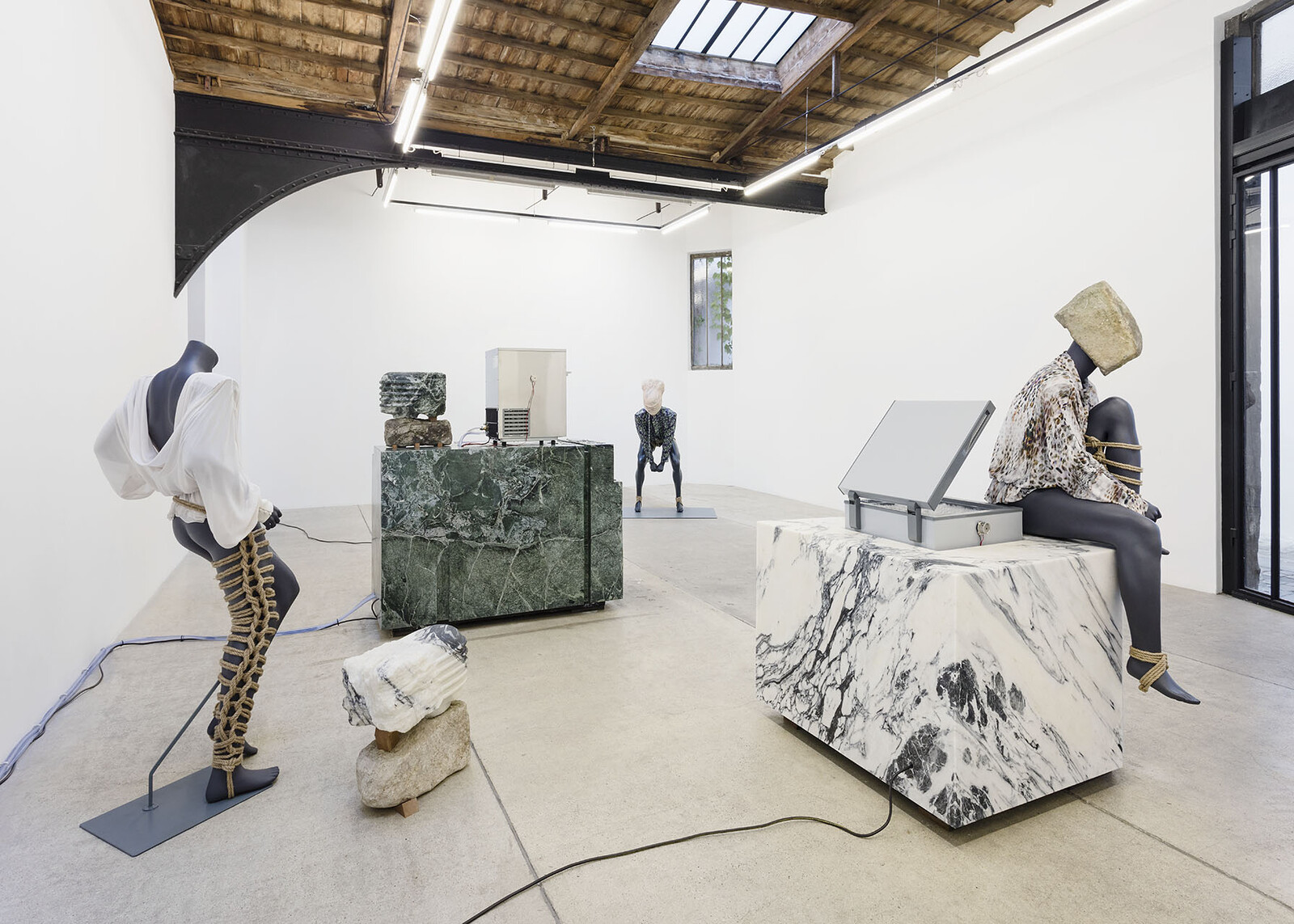
Bojan Šarčević’s aloof, unyielding mixed-media sculptures skirt the boundary between glacial reserve and slushy poignancy. In his first exhibition at Paris’s Frank Elbaz, he delivers frostiness and emotion in a single blow.
Three works in the first room, all titled Homo Sentimentalis (all works 2020), involve immense, magnificently polished marble blocks, ranging from ivory white to deep grey, that are carved with ridges, indentations, and geometrical notches. Muscular plastic mannequins wearing eighties-style silk blouses and naked from the waist down pose on and around the marble blocks. One figure, seated on black-veined white marble, has a lump of raw limestone for a head. The head of another figure, half-crouching as if about to pounce, is of marble carved with curved ridges; it holds two dagger-like objects, also marble, in its fists. A third mannequin—this one is headless—looms mid-movement, perhaps running or dancing, at the back of the room. The legs and feet of these vaguely alarming, hybrid forms are all neatly bound with jute bondage rope.
Two of the marble blocks have been hollowed out to contain readymade ice chests, the lids of which are open. Switched on and fully operational, they release cold air into the space; empty …
October 23, 2020 – Feature
Paris Roundup
Rachel Valinsky

Working in near-isolation in her Parisian bedroom-studio from the early 1970s until her death in 1981, the Alsatian artist Marcelle Cahn took an archive of old tourist postcards—the Eiffel Tower, a train station, a cathedral, a sleek white marble polar bear—and dappled them with shapes of varying sizes and colors. Displayed in the two-part group exhibition “Le plan libre – 1st chapter” at Jocelyn Wolff (the second part opens in early November), this modest intervention by an artist better known for her abstract paintings and collages feels anything but nostalgic: in isolation, one makes do with what one has.
In contrast to those galleries presenting artworks that either respond to the pandemic directly or were made during lockdown, oblique but timely approaches such as this stand out. Seeking to invert the limitations of confinement, this exhibition takes as its premise the titular architectural concept of doing away with interior walls to create one large open space—a conceit which plays out in the show’s uncluttered layout. Like Cahn’s delicate compositions, Georges Koskas’s dotted and lined geometric abstractions from the 1950s evoke the utopian, modernist aspiration to devise a universal pictorial language. Guy Mees’s sly, colored, cutout paper scraps from his …
May 11, 2020 – Review
Claudia Andujar’s “The Yanomami Struggle”
Rachael Rakes

“Can’t I accept the reality,” photographer Claudia Andujar wrote in her notebook during a 1976 trip to the Yanomami territories of the Brazilian Amazon, “of the poorly resolved contact of the Indians with the ‘Whites’…? Do I want to delude myself? Do I now want to prove that here I found simplicity of living?” By this point Andujar, who has been depicting and advocating for the Yanomami for the past 50 years, had already begun to witness significant changes overtaking these communities, due in large part to the influx of state infrastructure, agricultural projects, and missionaries. Her body of work over these decades is imbued with a belief that an empathic and creative depiction of the indigenous group could help protect them from the same societies that consume these images. Her recurring approach is “salvage,” in the anthropological preservationist sense, and has moved towards that goal through artistic representation, ethnography, and direct activism.
Fondation Cartier’s retrospective “The Yanomami Struggle,” which was first initiated by Instituto Moreira Salles, São Paulo, traces Andujar’s relationship to the Yanomami, and presents a biographical, anthropological, and psychological portrait of Andujar herself. Born in 1931 in Switzerland to a Swiss mother and Hungarian Jewish father, and …
October 22, 2019 – Feature
Paris Roundup
Sofia Gotti
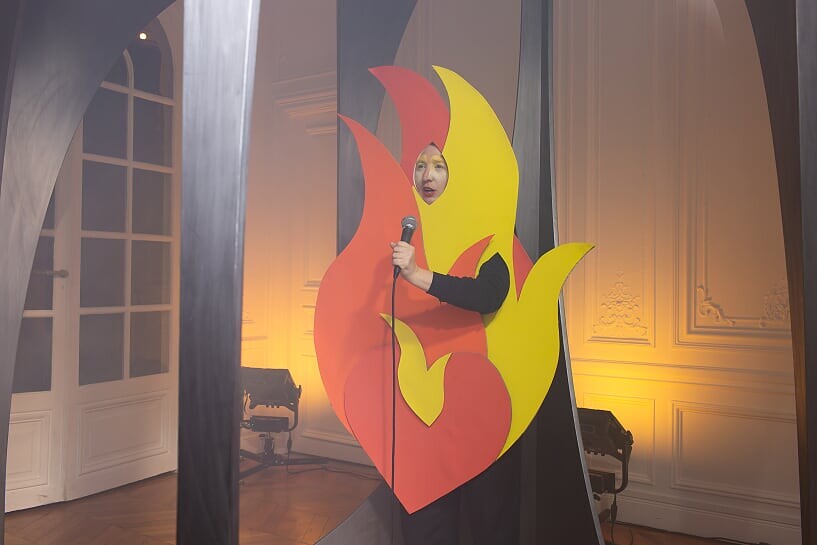
The most useful warning ever given to me while studying the Parisian avant-garde was “don’t forget they were all sleeping with each other!” A vital reminder that modern art was not the product of a pure and original creative act, but rather the consequence of cross-pollination that occurred thanks to friendships, sexual relations, and confrontations. That idea of purity and originality, still often fed to modern art scholars like mother’s milk, is a construction deeply compromised by power, politics, and, yes, sexuality. This context is inescapable, especially when wandering through FIAC at the Grand Palais. A leftover of the Exposition Universelle of 1900, the Grand Palais is a paradigmatic example of how France displayed its hegemonic power over culture and technology.
As a scholar of feminism and decolonialism, I am determined to deconstruct the canon I was handed. I resolved during my visit to focus on practices that signal a transformation in mainstream narrative and to ignore outdated (albeit seductive) presentations dedicated to contemporary mainstays, or booths like Gagosian’s all-male display dedicated to artists who spent time on the French Riviera. My main inquiry is, how are artists articulating the notions of impurity, disjunction, difference, and desire this week in …
September 3, 2019 – Review
“City Prince/sses: Dhaka, Lagos, Manila, Mexico City and Tehran”
Sohrab Mohebbi
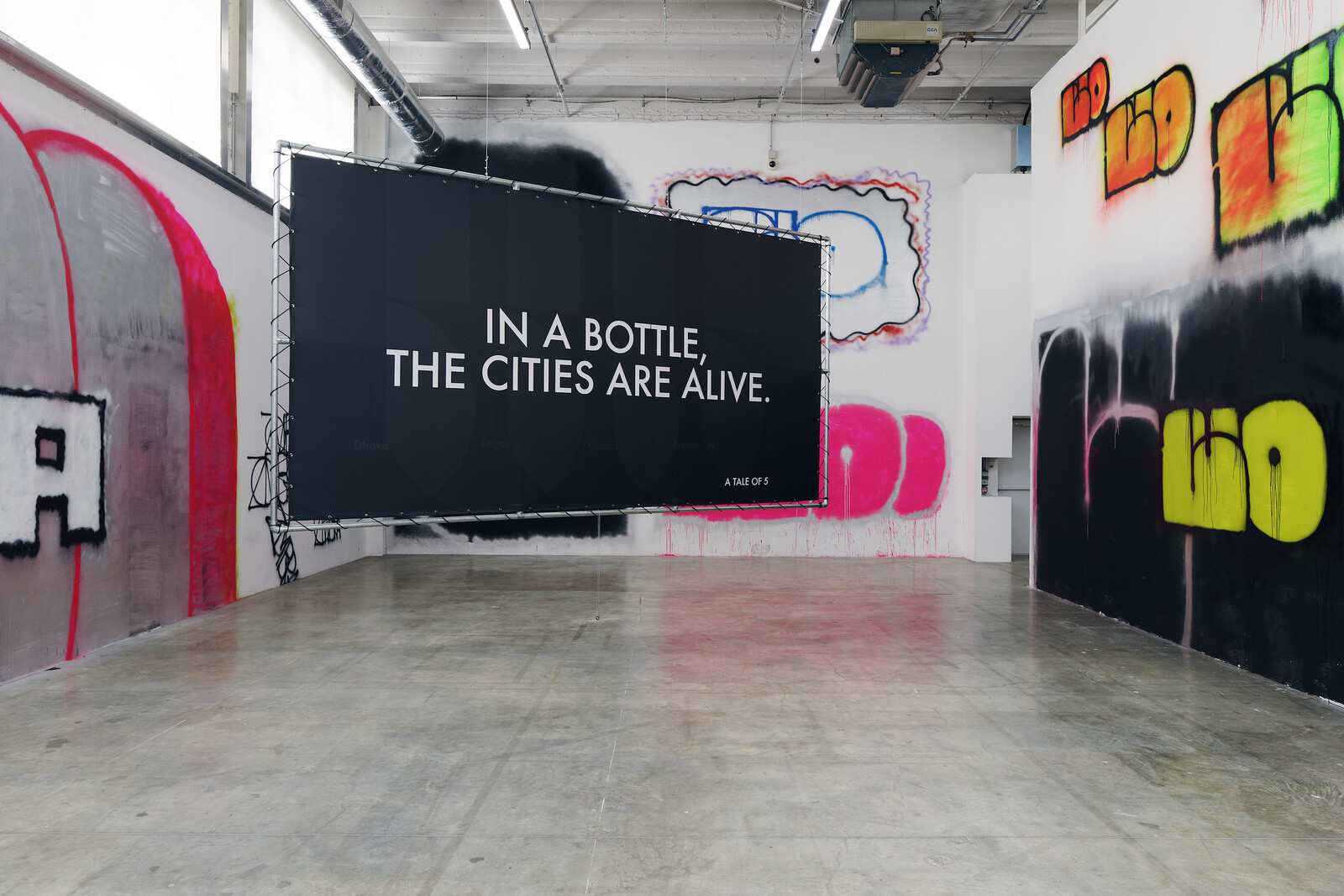
Just when certain worn-out frameworks of exhibition making appear to finally become obsolete, they are repackaged and mounted once again. The exhibition “City Prince/sses: Dhaka, Lagos, Manila, Mexico City and Tehran” seems like a throwback to 1990s curatorial expansionism, if not straight up nineteenth-century colonialism. Preliminary questions such as why these cities, why now, why in Paris, are not addressed, and no attempt is made to clarify the geographic focus of the show. The curatorial statement for the exhibition has deftly appropriated the hackneyed language of nonfixity and fluidity and eschews the more anthropological tone of the ’90s. Instead it presents a soft exoticism that is nominally reflexive, sealed in postcolonial lingo, and avoids salting the historical wounds of the local context by its geographic treatment, opting not to include any former French colonies. Therefore, the five cities’ “cultural, political and social singularities teem with numerous narratives which are all side-tracks providing glimpses into their identities, devoid of anything that could be univocal.” Yet the statement makes clear that the dissecting, omnipresent curatorial eye cut through these heterogeneous multiplicities, excavating glimpses into their equivocal identities. From this critical vista, the curator could not only present this multiplicity of positions, but …
March 12, 2019 – Review
Ilya Khrzhanovsky’s “DAU”
Robert Bird
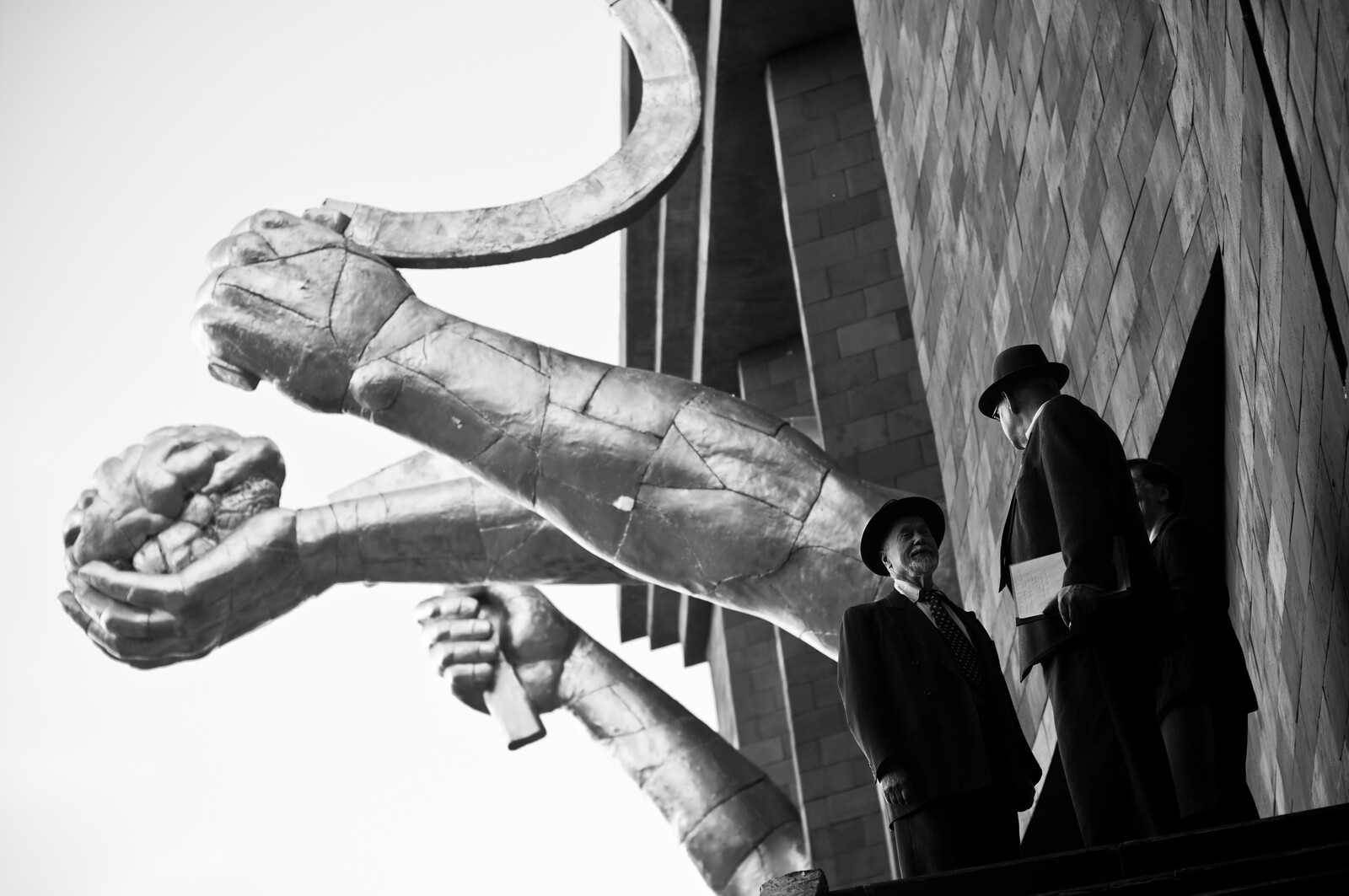
In 2009, the film director Ilya Khrzhanovsky resolved to expand DAU—a biopic of Soviet physicist Lev Landau, which he had been working on since the release of his feature film 4 (2004)—into a vast multimedia project. With the support of businessman Sergei Adon’ev’s Phenomen Trust, alongside a number of European film production companies, Khrzhanovsky constructed an entire campus in Kharkiv, Ukraine, modeled on a Soviet-era scientific research institute. He recruited dozens of participants to live on-site, for periods upward of two years, immersing themselves in the life of the institute and the material culture of the Soviet Union between the 1940s and ’60s. Blurring the boundaries separating fiction from everyday life, these performers lived their roles before a camera, resulting in over 700 hours of footage, which has now been edited into 13 feature-length films running, in total, more than 30 hours (the films are numbered, without individual titles, and dated 2019). Available evidence suggests that most dialogue and at least some of the action was improvised, thus also blurring the boundaries separating film from other visual and performance media (the closest analogue that springs to mind is Matthew Barney’s “Cremaster Cycle,” 1994–2002). The director’s inconsistent and self-aggrandizing PR …
October 22, 2018 – Feature
Paris Roundup
Lauren Mackler
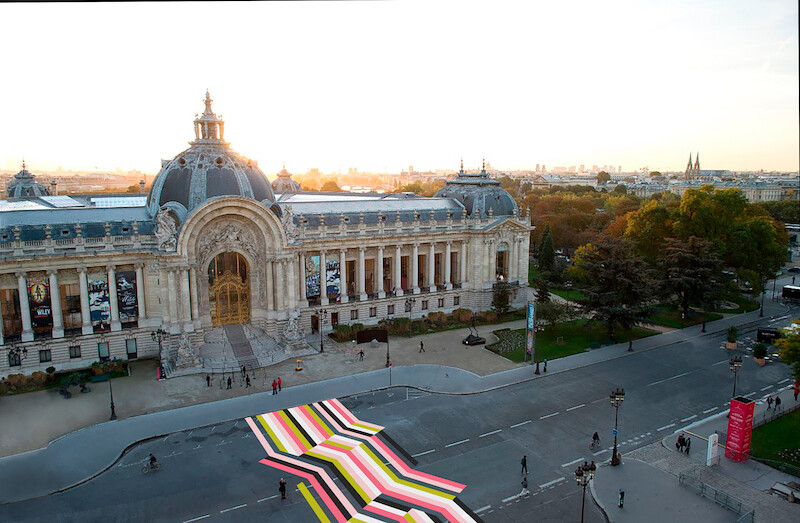
Stamina This is by no means comprehensive, so I’ll get my highlights out of the way. Rounding down, and starting with the experiential: I found the hunt for the various venues of Avant-Première compelling. This casually organized event was comprised of small Parisian galleries and emerging ventures opening their shows a few days before the fairs and driving traffic from post-Frieze London. Out-of-towners (this year, Los Angeles galleries) were embedded in unconventional spaces: up spiraling staircases and behind doorbell-laden portals. At the Beaux Arts, Nairy Baghramian’s exhibition of self-reflexive, materially seductive sculptures—in which shims and buffers, made of aluminum and cork, held up large unwieldy shapes—defied definitions of form; at Balice Hertling’s Marais space, Isabelle Cornaro’s detail-oriented objects and careful placement evoked stilled narratives; small captivating pictures by Lisetta Carmi hung quietly in Galerie Antoine Levi, capturing tender backstage scenes between sex-workers, trans lovers, and friends. A night, at the legendary club Les Bains Douches, where the smell of chlorine and the reflection of the indoor pool added to the intemperance of its crowd; a day prior, at a small hotel lounge, when our bartender told us that Oscar Wilde died just over there, a few feet away from our …
December 19, 2017 – Review
William Forsythe’s "Choreographic Objects"
Jennifer Piejko
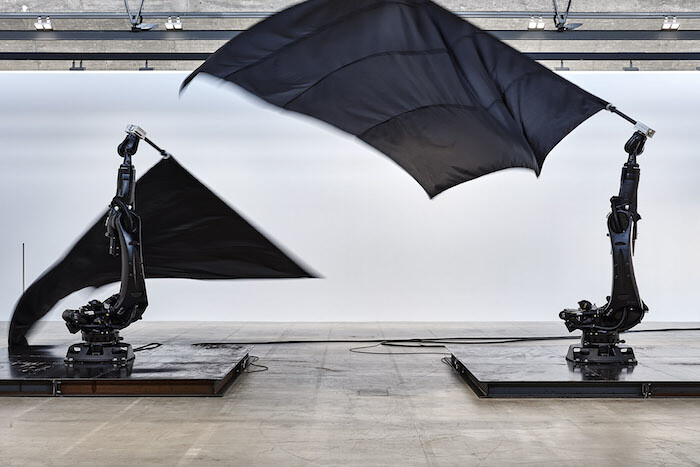
There were no hesitations, no missteps; no point at which one limb converged onto another, when one cut of cloth got caught up in another. A pair of machines, whose materials were listed obliquely, solely, as “readymade industrial robots,” rest promenade-style, side by side, oriented toward the entrance—toward me—before the flailing rods’ algorithm-determined chassé started up again. Each figure is a slab of steel on the ground, plane extending several square meters, and anchoring an eight-ton robotic arm at its center, grasping a five meter-high carbon fiber flagpole from which hangs an enormous raven nylon flag. The entire display is murdered out, from the seven heavy rotating joints to the high-voltage cables bundled together, snaking to the obscured generators powering the 28-minute-long duet.
Supplanting industrial, motorized instruments for the medium in which he is best known—movement for humans—these “Choreographic Objects” are impossible to comprehend without a preface of the codes that William Forsythe has written to program breathing bodies. The American choreographer was staging for the Stuttgart Ballet in 1976 before he was named artistic director of the Frankfurt Ballet in 1984, leaving only after three decades, when the city’s strapped arts funding administration proposed more conservative, populist productions. He established …
December 1, 2017 – Review
Haegue Yang’s "Quasi-ESP"
Sofia Lemos
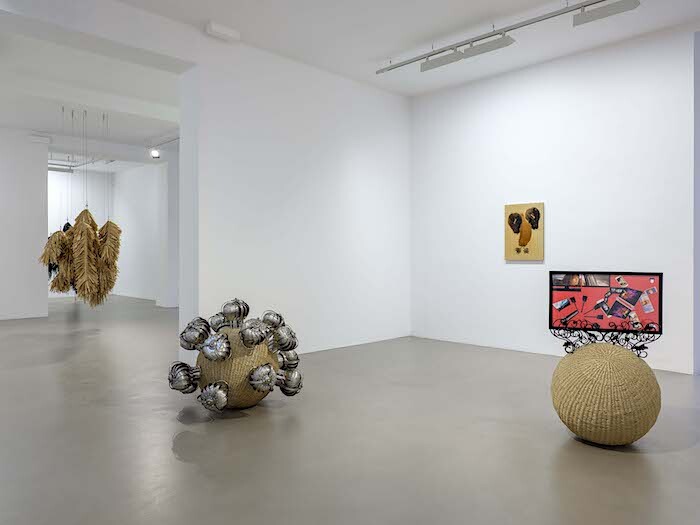
Not having a story to tell from the beginning or possibly starting from the middle is how Taoism describes time: continuity without a starting point. Stories abbreviate and expand in “intensiveness,” a term Haegue Yang uses, in dialogue with Jimmie Durham, to describe a mode that, similarly to belief, can exist beyond linear narrative form. Yang, who is recognized for her forays into domesticity and response to the assumed neutrality of exhibition spaces, seeks to find a home in the political, constructing spaces of being and belonging in an ever-recurring cycle of unbound histories and narrations.
While in her discourse Yang positions abstraction at the frontier of form, collapsing real and imaginary kinds of value (including that of the human body and technological gimmicks), her studio practice convolutes these tropes. This is the case with the series “Hardware Store Collages” (ongoing since 1994), where indexed images of hardware and quotidian electronic components are released from their functional context and framed as unfamiliar organic assemblages. At Chantal Crousel, Media Markt smartphones and Saturn Bluetooth speakers are the subject of compositions that intensify technological narratives of hybridity. Swaying Television Ball (2017) places a two-sided flat-screen monitor atop an exercise ball made with artificial …
October 20, 2017 – Feature
Paris Roundup
Tom Jeffreys
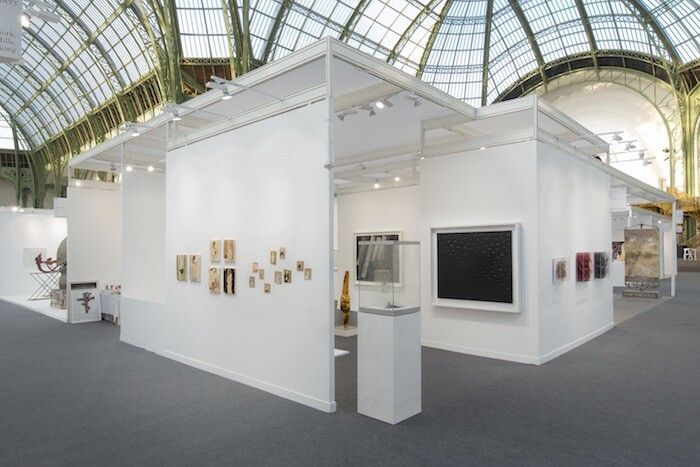
The wide eyes and open mouth of a child are a reminder that, even at art fairs, there is still space for the occasional moment of wonder. The girl has good taste: she’s enthralled by Endless (2012), a sculpture by Claire Morgan at the FIAC booth of Galerie Karsten Greve. A three-dimensional grid of dead flies has been suspended in mid-air on vertical lines of nylon weighted with little pieces of lead. Around them, similarly hung dandelion heads form a slim, delicate frame. It is a gossamer-light and enchanting piece, whose dark eco-political agenda has been lent new urgency by recent research into insect decline.
Animals seem, nonetheless, to be scampering throughout Paris this week. Also at FIAC, London’s Sadie Coles’ booth lures visitors in with Rudolf Stingel’s Untitled (2015), a black-and-white painting of a photograph of a squirrel. At the Musée de la Chasse et de la Nature, Sophie Calle interweaves the personal, the political, and the philosophical through a series of interventions, including covering the museum’s famous stuffed bear in a white shroud. Especially intriguing is a series of photographs (“Liberté Surveillée,” 2014) of deer, pheasants, and hares taken at night by automated cameras sited on the bridges and …
October 20, 2016 – Review
FIAC and Paris Internationale
Sabrina Tarasoff

Adam Curtis’s new film HyperNormalisation (2016) is about the diffusion of power through the manipulation of the media. It posits that politicians adopted the basic tenets of techno-utopianism to create an oversimplified worldview of a global economic and political landscape which had become overwhelmingly complex. The creation of mass-mediated, caricatured villains, alongside the triumph of algorithms that create an echo chamber of opinion, reify the sense of felt anxiety and support new forms of power. Participation reinforces these structures, maintaining the fantasy of status quo in society even as we feel assaulted by the unpredictable.
Art fairs seem to operate in similar ways, spreading states of disconcert and powerlessness which reify comparable anxieties about the demands of the market whilst providing the grounds on which to idly fantasize about structures which could undercut the existing order. While the critique of fairs—writers pointing fingers at excesses, entanglements, or trends—only exacerbates the problem, we all fall into the trap of assuming that power lies in some displaced “other,” ignoring how our collusion enables the structures we seek to oppose. Display, discourse, commerce, and criticism all consolidate the fair’s encompassing power by refusing to acknowledge how normalized its ebbs and flows have become.
Alternatives do …
May 19, 2016 – Review
Alina Szapocznikow’s "Human landscape(s)"
Mara Hoberman
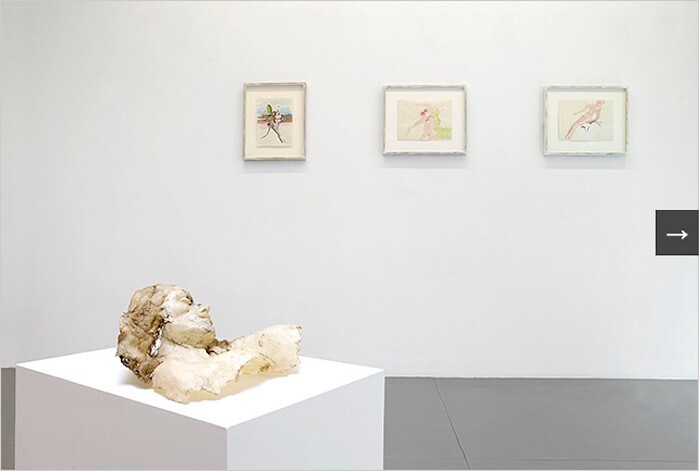
Best known for her alternately macabre and humorous sculptures—body parts cast in polyester resin, anthropomorphic wads of used chewing gum, plastic lamps featuring disembodied red lips or pink breasts, and Carrara marble belly rolls—Alina Szapocznikow also made hundreds of drawings over the course of her short career. Following a renewed interest in Szapocznikow’s work, as evidenced by several high-profile retrospectives in recent years (at WIELS in 2011/12, travelling to the Wexner Center, the Hammer Museum, and MoMA; the Pompidou Center in 2013; and the Tel Aviv Museum of Art in 2014), the current exhibition at Galerie Loevenbruck focuses on a series of drawings made just before her untimely death in 1973, aged 47. Presented alongside a single sculpture from the same twilight period (Head of Piotr, 1972, a haunting cast-polyester bust of the artist’s son), the nine “Human landscapes” on view are eloquent and sensual illustrations of collapse, decay, and rebirth.
Szapocznikow’s use of color in this series—a rarity in her drawings—adds a surrealist dreaminess to her signature “disarticulation of form.” A sparingly applied, limited palette of pinks, greens, yellows, and browns underscores the simultaneous frailty and vigor of Szapocznikow’s fragmented subjects. Watery pink figures are at once translucent and ghostly …
January 20, 2016 – Review
Corita Kent’s “Resurrection of the Spirit”
Mara Hoberman
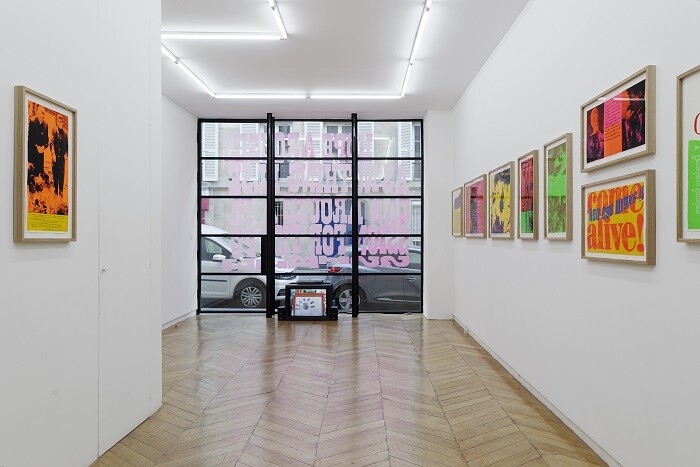
In difficult times, we look to the past for comfort and clarity. In the wake of France’s deadliest attacks since World War II, Corita Kent’s late 1960s and early 1970s silkscreens promoting pacifism and tolerance take on an unexpected urgency. Planned well before terrorists killed 130 Parisians, Galerie Allen’s exhibition devoted to the late American artist, activist, educator, and former Catholic nun, now feels eerily prescient.
Not far from Place de la République, where a shrine of flowers, candles, posters, and photos honors victims of the attacks, the gallery’s street-facing window offers a taste of Kent’s Pop aesthetic and pacifist ethos. Painted in bright pink block letters directly onto the glass, the proclamation “Hope arouses as nothing else can arouse a passion for the possible” is an excerpt from Kent’s 1969 print a passion for the possible. Showing her flair for mixing text and images from diverse—sometimes seemingly antithetical—sources, this black and yellow silkscreen pairs a quote from clergyman and peace activist William Sloane Coffin with a silhouetted photo of protesters making peace signs with their raised hands.
In other broadsheet-sized prints on view, Kent cleverly commingles references from the Catholic Church, advertisements, newspaper headlines, and pop music to create political messages …
October 23, 2015 – Feature
FIAC, Paris Internationale, and Paris Roundup
Claire Moulène
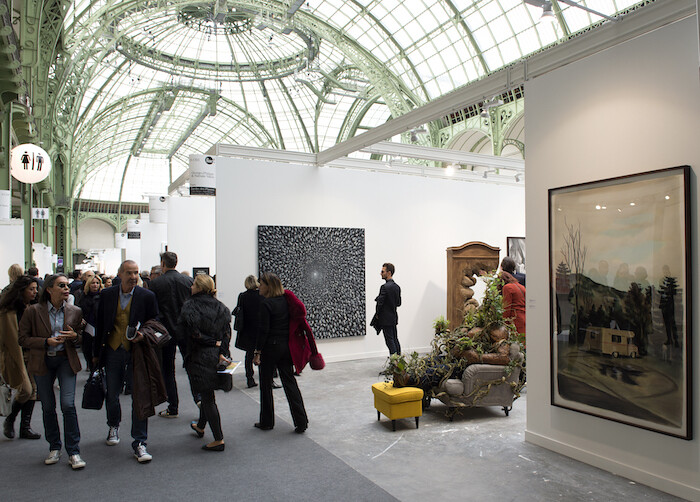
Emancipation. Such could be the keyword of this FIAC week in Paris. Since its 2003 takeover by the duo Martin Béthenod and Jennifer Flay (and then by the latter, on her own), the grand old lady that is FIAC has regained the golden splendor of the Grand Palais and the heart of the French capital. This move also allowed FIAC to return to the chessboard of the major international circuit, skillfully playing on both the modern and the contemporary tables. Yet this year the fair, upright on its two legs, flamboyant but not flambé, has been stabbed in the back. It was not betrayed by its detractors or by the “refusés” (and many were excluded from the final selection, which decreased to 172 from last year’s 191 participating galleries) but rather by new and timely independent initiatives in Paris, shaped by the desire for an overhaul of the landscape.
The first breakaway operation is Paris Internationale, which leaves all the other off fairs in the dust. Even FIAC’s sister fair, “Officielle”—founded in 2014 to host younger galleries—has a grim look this year, with the exception of a small handful of stands. Among them is Paris’s Galerie Olivier Robert, which presents a …
October 8, 2015 – Review
Untitled
Sabrina Tarasoff
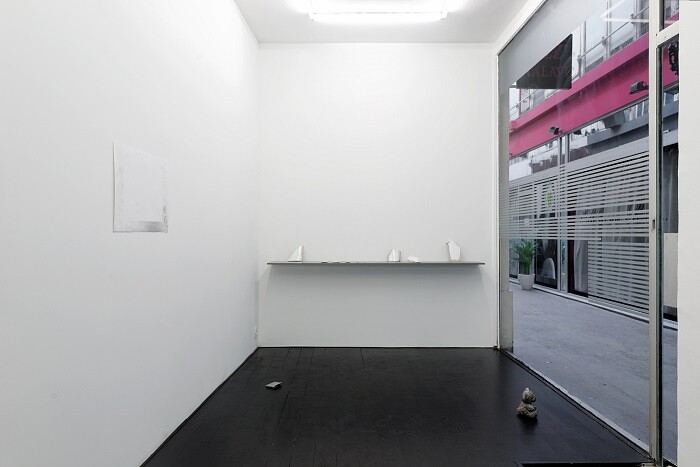
Madame Bovary losing silver, aluminum objects at sea. Madame Bovary losing an aluminum tampax at sea. Madame Bovary losing a Victorian doll at sea. Madame Bovary making pickles, painting bats, breaking porcelain. Madame Bovary posing as Salo, sitting in a Breuer chair, stitching pearls into her skin. Madame Bovary, in ornate frustration, creating a poignant display of ceramic plates with revolutionary motifs. This, and more, is what you might find if you follow Paris’s proverbial strumpets—its gotons Gustave Flaubert, Madame Bovary, 1857.]—down an old commercial passageway to Galerie Édouard Montassut. Situated in two mirrored spaces standing on opposing sides of the passageway, Goton & Montassut’s exhibition is an untitled marriage of minds, split half-way between its founding members: a self-proclaimed village wench, Eva Svennung, who runs the independent space Goton, and her co-signatory, who runs Galerie Édouard Montassut.
The exhibition—a bric-a-brac of objects equal parts domestic, lavish, emotionally void, and intentionally corrupt—is presaged by Svennung’s use of Flaubertian language. Madame Bovary is a pointedly unstated spirit conjured up in literary fantasy, weaving between the works her wanton commentary on the bourgeoisie: its failures, its endless repetitions, its antipathies, and apologists. She appears, for example, in Nina Koenneman’s carefully broken porcelains, Lithic …
September 17, 2015 – Review
Bruce Nauman’s “Selected Works from 1967 to 1990”
Gil Leung
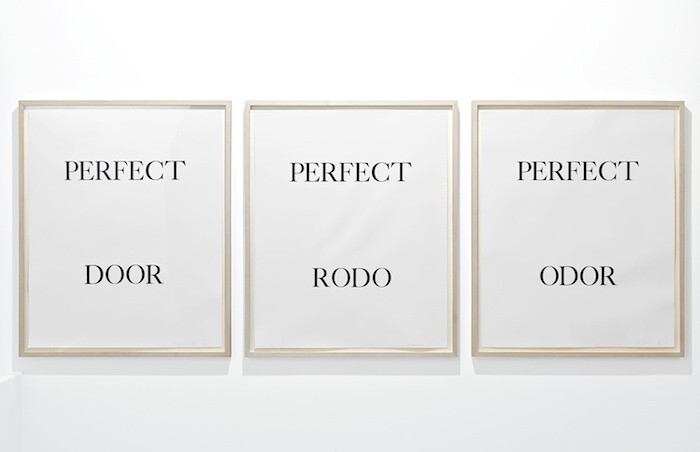
Bruce Nauman’s Good Boy Bad Boy (1985) was my first love. It was that work, the one that still, however far and many times I turn, sits at the base of my vocabulary. I don’t know if I can say why, it is just that this work hit something. I’ve never analyzed it particularly, apart from to say that its effect had to do with the use of language, of reading, of acting. Always exact, concise, simultaneously expansive and devastating.
I had always attributed this quality in Nauman’s work to the difference held in repetition, the abstraction of word to sound and back again, a certain undoing. The three lithographs PERFECT DOOR, PERFECT RODO, PERFECT ODOR (1973) that open “Bruce Nauman: Selected Works from 1967 to 1990” are not, though, deconstructive. The repetition of Perfect, Perfect, Perfect, the rearrangement of Door to Odor to Rodo, point less to the differential than the additional, not just space between but the surplus created in their phasing. What separates red MALICE and green ƎƆI⅃AM in the neon work Malice (1980) is, after all, not difference but use: the materiality of letters, the literal physicality of form remains. In this sense, it is not the …
July 20, 2015 – Review
Alex Israel’s “Summer”
Mara Hoberman
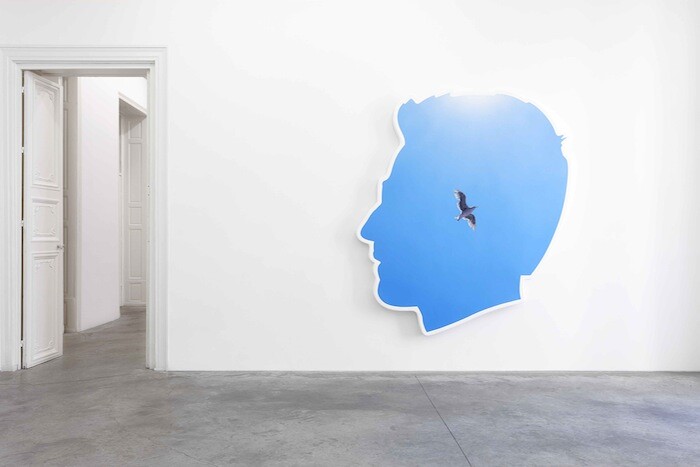
“Summer,” Alex Israel’s second solo show with Almine Rech, imports the artist’s signature California cool vernacular—sunglasses, surfboards, convertibles—to an eighteenth-century mansion in Paris. Describing the physical, cultural, and industrial landscape of his hometown, the LA native’s recent paintings and sculptures are all about plastic, airbrushing, and plenty of sunshine.
In the gallery’s largest room, three eight-foot-tall sunglass lenses from Israel’s “Lens” series (2013–2015) lean nonchalantly against the walls. Translucent yellow, orange, and purple, these oversized plastic teardrops are unmistakably representational, but recall minimalist works by the Light and Space artists who pioneered the appropriation of industrial plastics for large-scale sculptures in LA in the 1960s. Evoking DeWain Valentine’s candy-colored polyester resin discs (a group of these “Circles” made in 1971 was shown in Paris for the first time at Almine Rech in 2014), Israel’s shiny convex surfaces revive the “fetish finish” aesthetic associated with Valentine and his contemporaries including Larry Bell and John McCracken. Elegantly bowed with beveled edges, the lenses glisten from the front and cast tinted halos onto the white walls behind them. Their sunset spectrum conjures the particularly Southern Californian combination of sun, sea, and smog that inspired the Light and Space artists half a century ago.
While paying …
March 24, 2015 – Review
Davide Balula’s “A journey through you and the leaves”
Mara Hoberman
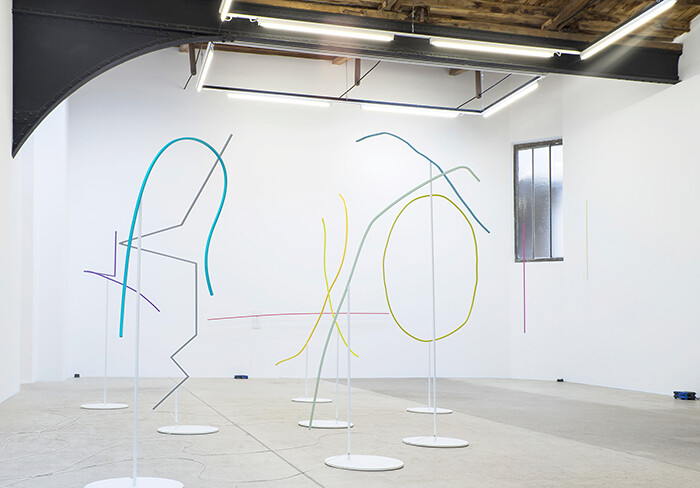
Featuring bright colors and interactive technology, Davide Balula’s current exhibition seems, at first glance, a significant departure from the artist’s earthy process-oriented oeuvre. It’s certainly in stark visual contrast to his last show with Frank Elbaz, “The Buried Works” in 2012, which turned the gallery into a vivarium with six blank canvases submerged under several tons of dirt where they were acted upon by natural corrosive and fungal processes. Here, “A journey through you and the leaves…” centers tidily around a series of internet-connected sculptures. Though less sensorial than his previous loamy environment, Balula’s current installation is, conceptually speaking, likewise fecund.
“Coloring the WiFi Network” (2015), comprises 17 thin plastic and metal sculptures, each a unique steel squiggle painted a different color. A cluster of these vibrant minimalist works—arrayed around the center of the gallery—are mounted on barely-there white stands so that the whole lot appear to hover in space, just like a Dr. Seuss-ian skyline of wacky rooftop antennas. Elsewhere, tucked into corners, rounding doorways, and mounted on the wall, isolated antennae recall the once ubiquitous (oft jerry-rigged) TV set-top rabbit ears. Despite initially evoking analog transmitters, these works are of and about our digital age. Their linear forms refer …
March 13, 2015 – Review
Trisha Donnelly
Barbara Sirieix
Following the artist’s wish to have no reproductions of her work, this review will include no images.
No text? At Air de Paris, the press release is nowhere to be seen. This recognizable signature of Trisha Donnelly’s exhibitions is one of various measures to limit the documentation of her work: show and work titles are absent in the gallery space, and the dissemination of images outside it is very limited. This operation challenges a certain routine use of textuality as portal to interpretation. By forcing the viewer to move away from this process, the artist creates the conditions for the autonomy of the exhibition as experience. Stripped of text, the works are barren, and writing about them causes an embarrassing feeling of nudity. Nonetheless, these works call for a certain referentiality, but we have to look into the unbound, slimy matter of our memory in order to activate it.
On the night of the opening, viewers strolled in the dim, blueish light of Trisha Donnelly’s videos, the droning chatter of the crowd intertwining with reiterative pings coming from one of them, located at the back of the gallery. Amid the shadows, a drawing on paper (all works untitled; all works 2014) …
January 28, 2015 – Review
“The Shell (Landscapes, Portraits & Shapes), a show by Éric Troncy”
Sabrina Tarasoff
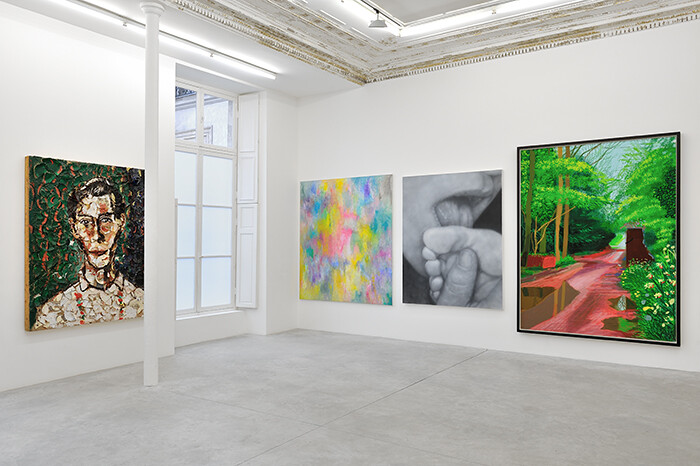
In 1991, in response to critiques of his exhibition “No Man’s Time” at Villa Arson in Nice, curator Éric Troncy wrote a letter to the editors of Flash Art, in which he argued that the exhibition had been “based on no particular concept,” thus locating it outside of any theoretical framework. Instead, he positioned the show in proximity to Guy Debord’s idea of the spectacle, at least insofar as the viewer was presented with a spectacular kind of art—political, according to the curator, simply due to its negation of the heavily theoretical objectives and attitudes of galleries and institutions at the time. But in its apparent insurgency, Troncy’s radicalism seemed to belong solely to the leisure class, soliciting a conflation of art and life, which advocated a liberation from ideology, yet irrevocably gave way to a perverse commodification of the self.
Whilst it may seem uncalled for to hold Troncy to objectives declared over two decades ago, it is difficult to consider his recent exhibition at Almine Rech, “The Shell (Landscapes, Portaits & Shapes),” without being influenced by its resonances on the curator’s former conceptual approach. The exhibition, saturated with 42 paintings and a singular sculpture (a polyester caveman titled Giant, …
December 15, 2014 – Review
Adel Abdessemed’s “Solo” and an overview of the gallery
Mara Hoberman

The news that Yvon Lambert is closing his Paris gallery is hardly shocking. What is remarkable, however, is how long his run lasted. Fifty-plus years spent working with contemporary artists puts Lambert in the rare position of being both an art historical footnote and a current art market player. The first show he organized, in 1961 in his hometown of Saint-Paul-de-Vence, was a group exhibition titled “Modigliani to Picasso.” His final show, at the Paris gallery he has occupied since 1986, presents new work by Adel Abdessemed. The journey in between is a testament to Lambert’s longevity, adaptability, and influence.
Built up over the course of five decades, Lambert’s artist roster is lengthy and diverse, ranging from French BMPT Minimalists Daniel Buren and Niele Toroni to flashy young Americans like Shinique Smith and Nick Van Woert. Having made a name for himself in the late 1960s by introducing Conceptual and Minimalist artists—Robert Ryman, Carl Andre, and On Kawara among others—to French audiences who were still hooked on Pop Art, Lambert remained committed to showing “artists of [his] own time.” This pursuit obliged the gallery to continually evolve according to changing tastes, new movements and media, and a fickle art market.
In addition …
November 7, 2014 – Review
Daiga Grantina’s “Legal Beast Language”
Barbara Sirieix
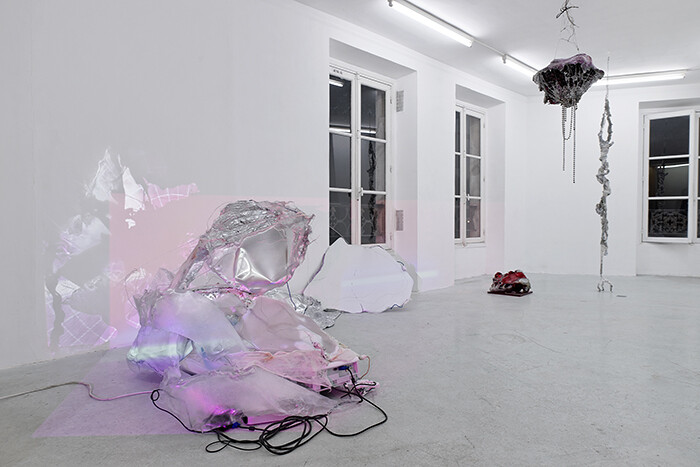
There are not many galleries above the ground in Paris. Every time I walk up the narrow stairs to the second floor of 1 rue Charles-François Dupuis, I brace myself, as if I’m about to enter a state of altered air density or gravity. Previous events there have often dwelled on constraining the political body, such as the two-year program of “The Institute of Social Hypocrisy” initiated by artist Victor Boullet and developed between 2009–2011, where curator Damien Airault was locked up inside for a week and was exclusively fed on whale meat. The apartment was later taken over by gallerist Joseph Tang, who continued with the radicality of these earlier artistic projects. Last winter Boullet, now also represented by the gallery, removed the windows of the space and arranged a wall where only a tiny Alice in Wonderland-sized door allowed Joseph access to his office. These past experiences of the space lead me to be on the lookout, and true to form, the current exhibition induces an unease in the viewer, soliciting the body’s sense of place towards a greater consciousness of the enthralling, blood-curdling chaos of space.
The first Paris solo show I saw of Berlin-based Latvian artist Daiga …
October 23, 2014 – Review
FIAC
Sabrina Tarasoff
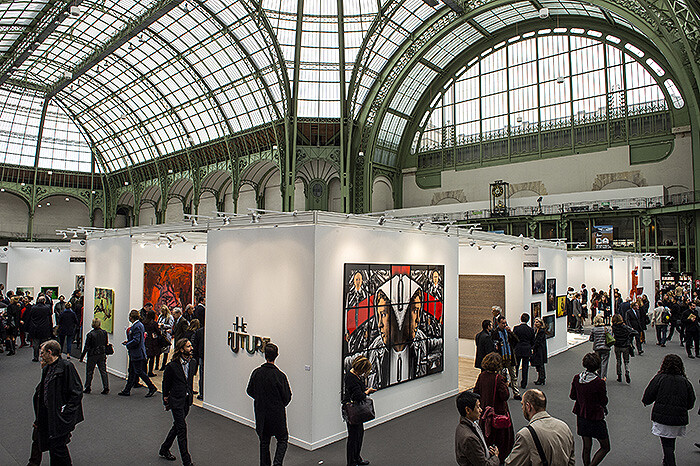
“Is there sexual innuendo in the artworld?” Cady Noland, in response to this question posed by John Waters and Bruce Hainley in Art: A Sex Book (2003), answered with a very prompt: “Yes. ‘Euphemisms.’” According to the infamous artworld absentee, artists and dealers are screwed, and often engaged in “one night stands”: money, artworks, and documentation are tenderly “held onto” by galleries; practices are promiscuous, and, as Noland states, “artists can have ‘performance anxiety’, because art, like sex, can be on demand.” Within the context of a fair, where artworks are arguably in their highest public demand—at least in an economic sense—“performance anxiety” of any kind seems resolutely forbidden. Due to its emphasis on peformativity, the conditions created for the display of art are precisely attuned to the sexuality incited by the market—or more specifically, by consumerism—conflating not only symbolic and capital value in the works themselves, but ensuring the total collapse between financial affairs and personal relationships. What is enacted, by the system and those who participate alike, is a fetishism directed towards artworld professionals and their interactions, rather than towards the works: a promiscuous knowledge exchange encouraged by the increasing amount of discursive platforms integrated into the fair …
July 21, 2014 – Review
"Dark Waters"
Sabrina Tarasoff
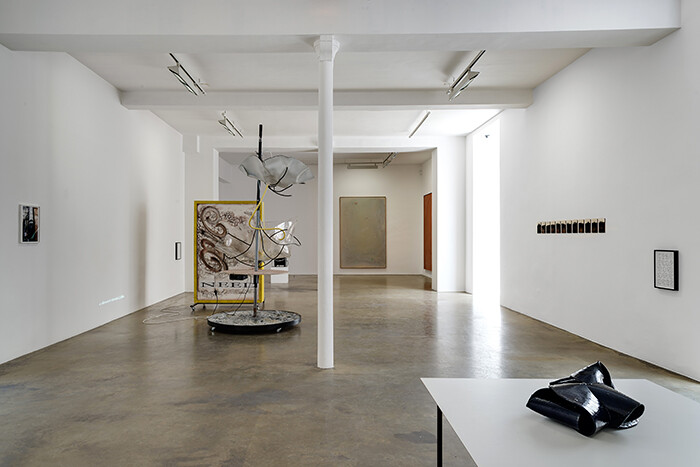
The sea is said to speak to us in an amalgam of mysterious and alluring analogies, which are drawn from its depths and, at times, swallowed all too easily by the contemplative desires of artists, poets, and theorists alike. The metaphors are countless, yet invariable—from the reflective surfaces of still pools to the boundless temperaments of open seas. However, such romanticized figures of speech would seem to have capsized with the onslaught of post-industrial capitalism and its concomitant economies, giving way to more intangible seascapes, which present information, knowledge, and research as equally boundless and immersive landscapes.
In literary scholar Armelle Barguillet-Hauteloire’s book on the work of French author Marcel Proust, Proust et le miroir des eaux: Ou le thème de l’eau dans La Recherche du Temps Perdu [Proust and the Reflecting Waters: Or, the Theme of Water in In Search of Lost Time], the significance of allegorical self-reflectivity is rescued at sea, so to speak. In her reading of Proust’s 1913–27 novel, which the press release of Galerie Chantal Crousel’s recent exhibition cites, Barguillet-Hauteloire suggests that research mimics water’s capacity to mirror the world as a reflection of the reader’s life—much like water operates as a frequent trigger for memory …
June 17, 2014 – Review
Basma Alsharif’s “DOPPELGÄNGING”
Barbara Sirieix
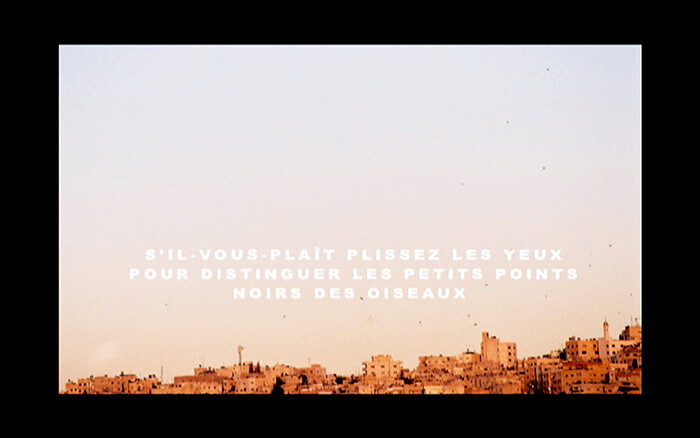
“A video titled Milk and Honey.” These are the opening subtitles appearing on a plasma screen in the first room of Basma Alsharif’s solo exhibition in Paris. The following words, spoken in Arabic by a male narrator, introduce a story to come, of a woman’s lost love. They immediately remind me of Song of Songs (or Song of Solomon), a love story from the Old Testament often interpreted as an allegory of the relationship between a people and a nation: “Your lips, my bride, drip like the honeycomb. Honey and milk are under your tongue. The smell of your garments is like the smell of Lebanon.” Then, the narrative shifts to the making of the video and the admission of its failure: “What I was left with was a video with no images.” At this point, we are able to identify Alsharif’s own subjectivity behind the man’s voice. She describes all the material she collected while she was in Beirut, as well as her initial intention to create a “fictional love story set in the Middle East devoid of political context.”
The video is surrounded by an extensive display of photographs that are all part of an installation titled The Story …
May 7, 2014 – Review
Pauline Boudry/Renate Lorenz’s “Journal Notes from Backstage”
Mara Hoberman
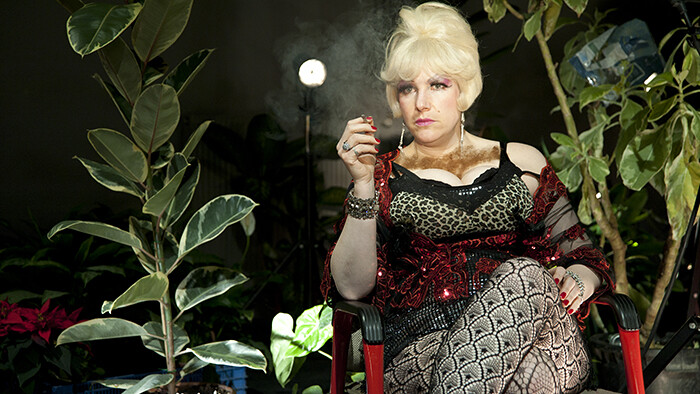
In a clip from a 1985 BBC-TV interview, viewable on the BBC’s website, French writer and activist Jean Genet describes a dream he had in which the film crew revolted against the television-interview paradigm wherein a subject (in this case Genet himself) talks in front of a camera while half a dozen people off-camera—various technicians plus the director, interviewer, and interpreter—remain unseen and unheard. “Why don’t they come and push me out?” he goads before concluding his impromptu critique of normative behavior with the self-critical statement: “I am not annoyed with you for being part of the norm, I am annoyed with myself for accepting to come here.”
Given that Berlin-based artists Pauline Boudry and Renate Lorenz share Genet’s passion for exposing and exploring societal norms and margins, it is not surprising to find this interview featured prominently in the artist-duo’s current exhibition, “Journal Notes from Backstage.” Based on their extensive research of various subcultures historically deemed “deviant” by hetero-normative cultures, Boudry and Lorenz have developed a diverse oeuvre of performances, films, photographs, installations, and publications, which feature figures like bearded women, transvestites, sadomasochists, and homosexuals. “Journal Notes from Backstage” showcases two recent works: Toxic (2012), a filmed performance screened in …
April 8, 2014 – Review
Deimantas Narkevičius’s “Cupboard and a Play”
Laura McLean-Ferris
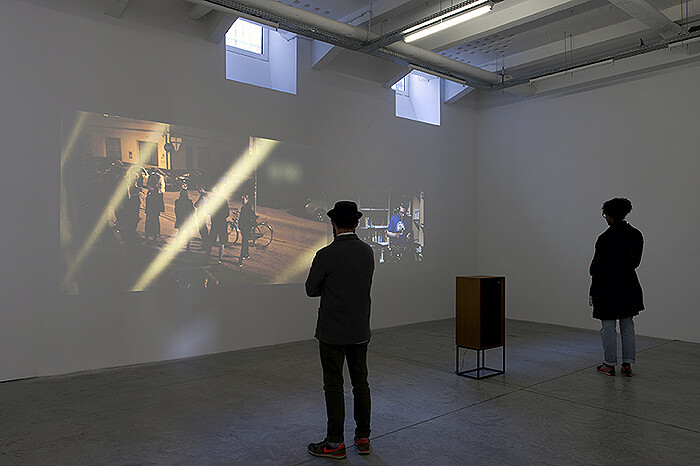
Archetypal pretty boys with guitars play a gig in a second-hand bookshop. T-shirts hang off their limber bodies, their pale skin wrapped tightly around their cheekbones. An audience, primarily made up of young people, occupies the space, nodding their heads, smoking and clambering over one another while the band bounces, sweats, and wipes their faces. Washing over the crowd is the sound of the band’s jangly, post-rock pop, provided by friendly bass, shimmery lead guitar, clipped drums, and endearing shout-singing, resembling a gentler, lusher Franz Ferdinand sound.
It’s difficult to fathom what the members of the band, which is called Without Letters, are saying when they speak to the audience in their native Lithuanian. But more importantly, watching this 40-minute documentation in Deimantas Narkevičius’s video installation titled Books on Shelves and Without Letters (2013), it is difficult to place the video historically. There’s an artful 1980s aesthetic about the quality of the footage. And there’s also something so deeply, suspiciously photogenic about a band playing music in a vintage bookshop populated by young and attractive people that it makes the video seem more like a sweet, hipster dream than a reality, suggesting that this might not be a real band with …
December 19, 2013 – Review
Pierre Huyghe at Centre Pompidou and Philippe Parreno’s “Anywhere, Anywhere Out of the World” at Palais de Tokyo
Vivian Sky Rehberg
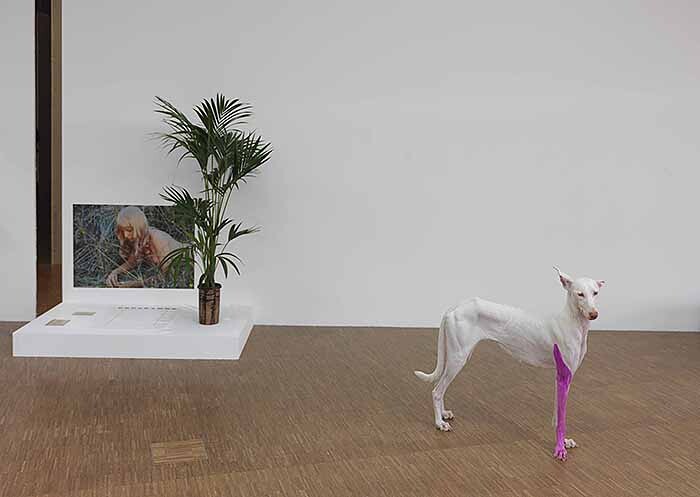
I hate to admit this now, but my eyes rolled involuntarily when I first heard that the Centre Pompidou and the Palais de Tokyo would be holding solo exhibitions of work by Pierre Huyghe and Philippe Parreno, since both artists have already had major shows in Paris museums, but it turns out to be longer ago than I thought (2006 for Huyghe and 2009 for Parreno). At the same time, I also harbored the fantasy that the Musée d’Art Moderne de la Ville de Paris would suddenly wager on a historic trifecta and simultaneously unveil a Dominique Gonzalez-Foerster exhibition, thus providing comparative mid-career overviews of these three established artistic associates, all of whom are at the top of their aesthetic game. As it stands, Huyghe and Parreno’s respective exhibitions generously acknowledge and include a whole host of friends (Gonzalez-Foerster among them), influences, iconic figures, and collaborators, as well as myriad living creatures, in Huyghe’s case, and an abundance of phantoms, in Parreno’s.
If the art world, and the French art world in particular, has a reputation for being intimidatingly cliquish or clannish, a remarkable and surely unintentional achievement of these exhibitions is that they testify to the singular importance of artistic …
October 24, 2013 – Review
FIAC
Mara Hoberman
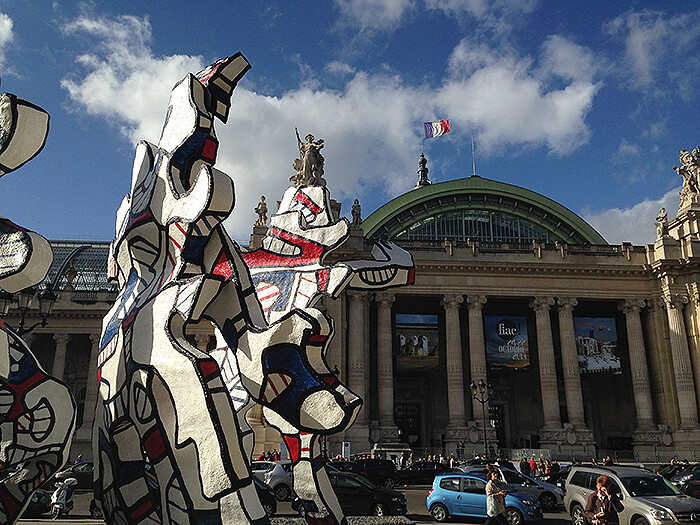
Turning forty is tough. But FIAC is celebrating this milestone in characteristic Parisian style with a slightly more international roster of galleries on view in the Grand Palais (with first-timers from Canada, Ireland, and the Czech Republic). And with an expanded and notably strong “Hors les Murs” (Outside the Walls) program this year, the metaphorical birthday party is reaching a wider public audience and taking over more Paris real estate than ever before. Indeed part of what makes this year’s fair particularly strong is the synergy between what’s for sale inside the fair booths and what’s on view elsewhere in the Parisian art scene.
Beyond representing nearly 30% of the booths at FIAC, local galleries—surely anticipating a rush of international visitors—tend to plan their best shows for October (Omer Fast at gb agency, Abraham Cruzvillegas at Galerie Chantal Crousel, Aaron Curry at Almine Rech Gallery). In addition, the fair’s sprawling “Hors les Murs” spotlights the city’s cultural institutions, public gardens, and historic monuments. This fall, these satellite presentations range from a large Jean Dubuffet sculpture, Welcome Parade (2008 [based on a maquette from 1974]), installed in front of the Petit Palais, to the first-ever Parisian showcase of the entrepreneur François Pinault’s …
September 18, 2013 – Review
Mungo Thomson
Kevin McGarry
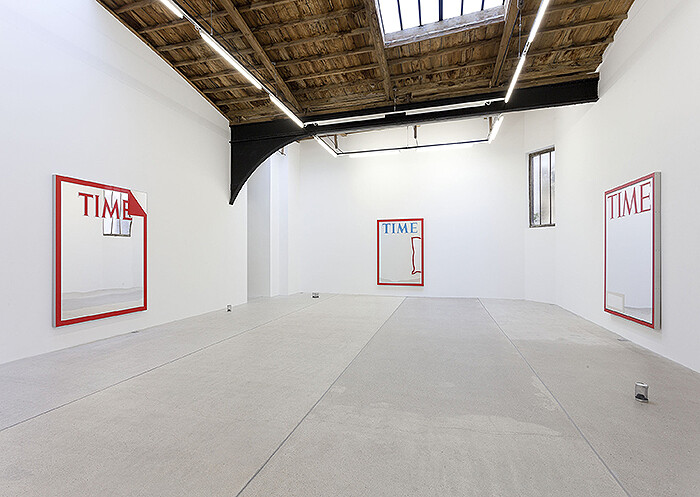
In his first exhibition at Galerie frank elbaz, Los Angeles-based artist Mungo Thomson balances tidy conceptualism with dexterous formal conceits in his ongoing, obsessive abstractions of the editorial purview and design of the iconic TIME magazine. Minimally installed, the exhibition is anchored by a room of four wall-mounted mirror works scaled roughly to the size of a tall man, like the artist himself. Styled after the immediately recognizable graphic design of the magazine, each mirror pane is framed by a red line within which the four letters of TIME are printed in a concise array of differing colors and serif fonts.
The typography, which slightly varies from one mirror to the next, directly corresponds to the design used for the magazine issues whose original photographic cover image Thomson has effectively erased in favor of the viewer’s own reflection—March 23, 1987 (The Nature of the Universe), April 16, 1990 (Unlocking the Secrets of the Universe), August 4, 2003 (The Science of Meditation), and October 13, 1975 (Meditation: The Answer to all Your Problems?) (all works 2013). Each of the editions that Thomson selected for the exhibition alludes to metaphysical concepts, the inner mind, or outer space—enduring themes that shape the larger constellation …
June 11, 2013 – Review
Jesper Just
Mara Hoberman
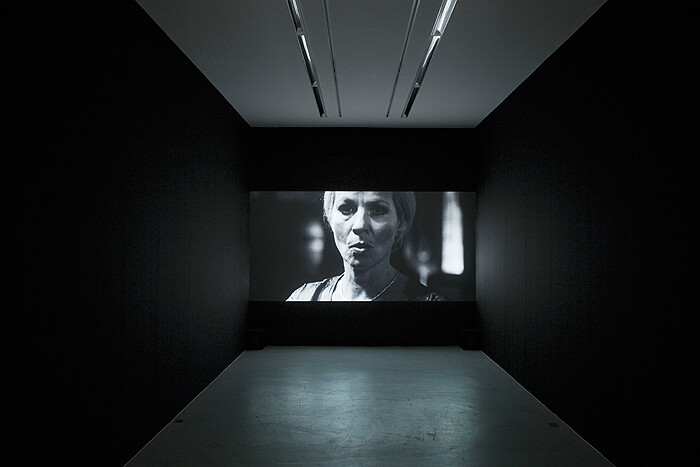
Singing, dancing, crying, hugging—there has been much discussion over the past decade about how Jesper Just’s films critique codes of masculinity (particularly those established by Hollywood) by showing men doing “unmanly” things. In a hiatus from his androcentric—if critically so—worldview, the three films currently showing at Galerie Perrotin feature female protagonists and confront constructs of femininity. Though the focus of A Vicious Undertow (2007), Sirens of Chrome (2010), and Llano (2012) is shifted onto women, the films’ surreal settings, lack of dialogue, moody scores, and emotionally ambiguous relationships are classic Just (who reprises his signature male-dominated motifs in the Danish Pavilion at this year’s Venice Biennale).
Shot in black-and-white 16mm film, A Vicious Undertow tackles old Hollywood glamour ideals and pre-code innuendo. Set in an oriental-themed bar, the film opens to a Muzak version of The Moody Blues’s Knights in White Satin (1967). A lone woman (Benedikte Hansen, who appears in multiple Just films) is introduced from behind, with her blonde chignon, delicate gold chain, and silky dress as the embodiment of film noir feminine mystique. When her face is finally revealed, we see that her puckered lips are responsible for the melancholy soundtrack. Soon a harmonizing whistle joins hers …
April 17, 2013 – Review
Haegue Yang’s “Ovals and Circles”
Mara Hoberman
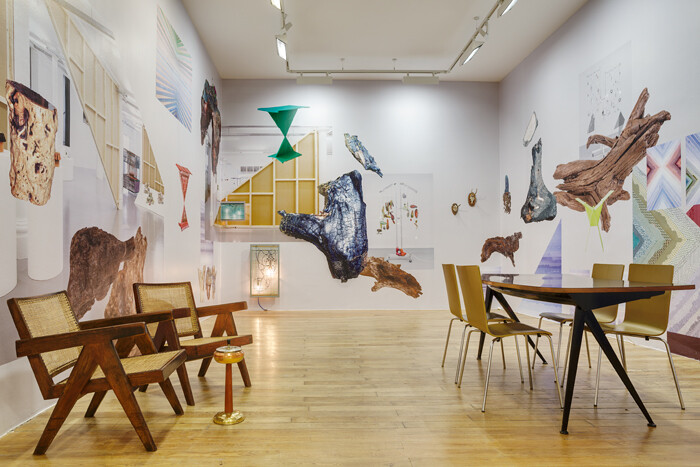
Hot on the heels of her first solo exhibition with Chantal Crousel (“Ajar” at the gallerist’s satellite showroom, La Douane, October 18–December 7, 2012), Haegue Yang’s current show at Crousel’s flagship gallery moves beyond the venetian blind installations and drying rack sculptures for which the South Korean-born, Berlin-based artist is best known. These signature works, however, do make a two-dimensional cameo in photographic wallpaper—a collaboration with designer Manuel Raeder—that covers three walls at one end of the gallery. Field of Teleportation (2011) is a disorienting digital collage combining installation shots from Yang’s past exhibitions with not-to-scale images of individual works. Domesticized with a pair of easy chairs, a standing ashtray, and a dining table set, this room is a habitable microcosm of Yang’s oeuvre. The only actual sculpture in the room is a small venetian blind in a powdercoated steel frame installed low on the wall, just beneath its own photographic image. Manteuffelstrasse 112 – Single and Solid (bathroom radiator) (2010)—a window/radiator hybrid—reacquaints the viewer with Yang’s alternate reality wherein useful household items are reborn as nonfunctional curios. But apart from a sculpture/bench made from nine colorful vintage side tables (Facilitating Pentagon Seating [2013]), Yang’s latest works appear freed from …
January 14, 2013 – Review
“Light and Dark: The Projections of Robert Barry, 1967–2012”
Mara Hoberman
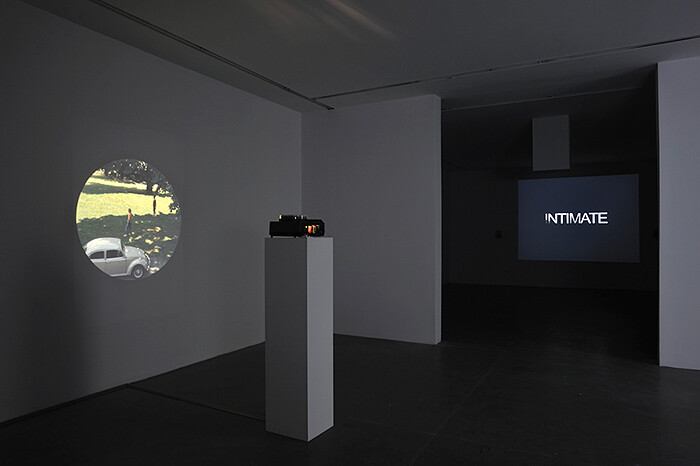
In 1967, a young Robert Barry spent six weeks on a former racehorse farm in Belmont, New York, as part of an artists-in-residence program sponsored by the Whitney Museum. The documentary photographs he shot during his summer on the farm—a medley of picket-fenced country roads, grazing horses, and artists convening in the converted barns that served as their temporary lodgings and studios—would become the foundation for two formative works: Scenes (1967), a 16mm film (notably included in the Museum of Modern Art’s landmark conceptual art exhibition “Information” in 1970) and Belmont 1967 (1977), a slide-projection combining text and images. Shown together for the first time—along with the seminal film, Red Seconds (1966–1967), and three word-only slide projections (from 1969–1971)—these works form a historic anchor for Barry’s current survey at Yvon Lambert. From an artist known for his conceptual explorations of time—how it is measured, received, visualized, and manipulated—this gathering of Barry’s earliest cinematic experiments combined with his more recent digital videos from the 2000s constitutes a meta-artwork of sorts. Like a time capsule, old and new works intermingle in the gallery evoking thematic and aesthetic connections.
Barry’s characteristic non-narrative text and image juxtapositions are established in the first room with Belmont …
October 18, 2012 – Review
FIAC
Mara Hoberman
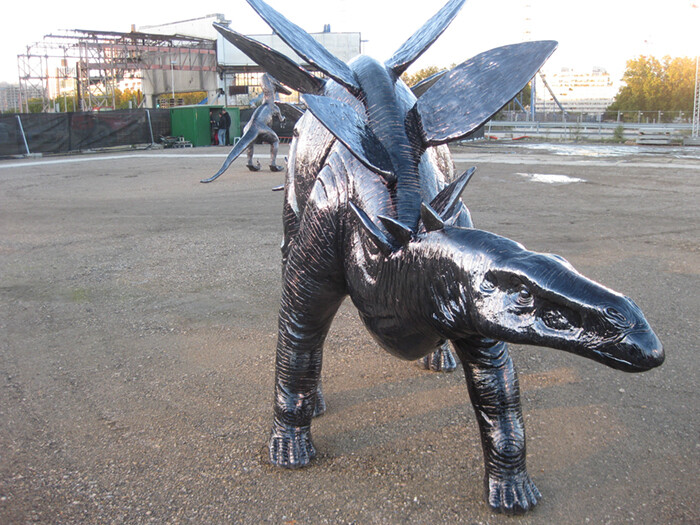
It’s hard to pinpoint the moment that FIAC actually started. Extramural events—gallery unveilings, private museum tours, an “immaterial” auction, a magazine launch, a performance on a bateau mouche, and lots and lots of parties—began in earnest on Monday, just one day after Frieze ended, two days before FIAC’s “guest of honor” and press previews, and three full days before the fair’s official opening on Thursday. With so much build up—72 hours of hype fueled by generous amounts of champagne and finger foods—I worried the fair itself would be a letdown.
Early in the week proved a good time to take in the public art on view in Paris and visit a few new venues just outside the city center. Monday evening there was a chic booze-cruise along the Seine to Ile Seguin, a 29-acre island west of Paris. Once home to a Renault factory and pretty much abandoned since the auto plant closed in 1992, a major redevelopment promising exhibition spaces and artists’ studios is underway. R4, the Jean Nouvel-designed arts center, is not scheduled to open until 2015, but in the meantime the project has partnered with FIAC to exhibit outdoor sculpture. As we debarked onto the yet-to-be-gentrified grass-and-gravel atoll, …
July 24, 2012 – Review
Taryn Simon’s "A Living Man Declared Dead and Other Chapters I–XVIII"
Arnaud Gerspacher
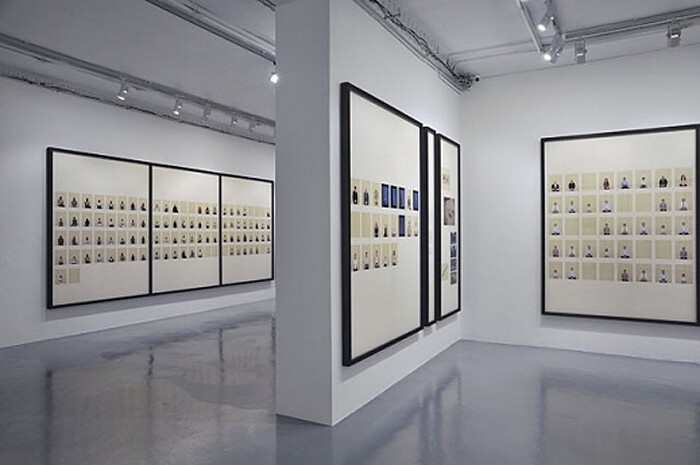
Repetition is never sameness. This is the first thought I had seeing Taryn Simon’s “A Living Man Declared Dead and Other Chapters I–XVIII” (2008–11). An aesthetics of taxonomy, each chapter in the work is comprised of identical framed panels of varying width showing three types of information under glass: 1) serialized and numbered portrait photographs grouped together neatly in rows; 2) documentary text and a registry of names referring back to the portraits; and 3) staggered documentary photographs, which serve as narrative supplementation for the portraits and the text. The presentation is polished, clean, and simple with little fuss—much cleaner than the stories they have to tell.
The work is the admirable result of research on a global scale, and each chapter documents sundry bloodlines and the circumstances surrounding their genealogy: a truncated family tree after the Bosnian genocide; the lineage of an official sent by the Zionist Organization to Palestine for settlement; a line up of mangled laboratory test rabbits not indigenous to Australia; the bloodlines of a family in the Druze religion based on strict inter-community reincarnation; a Kenyan doctor who gets paid in wives and cattle for his services; and the living-dead man himself, Shivdutt Yadav, whose status …
June 21, 2012 – Review
"Glaze"
Chris Sharp
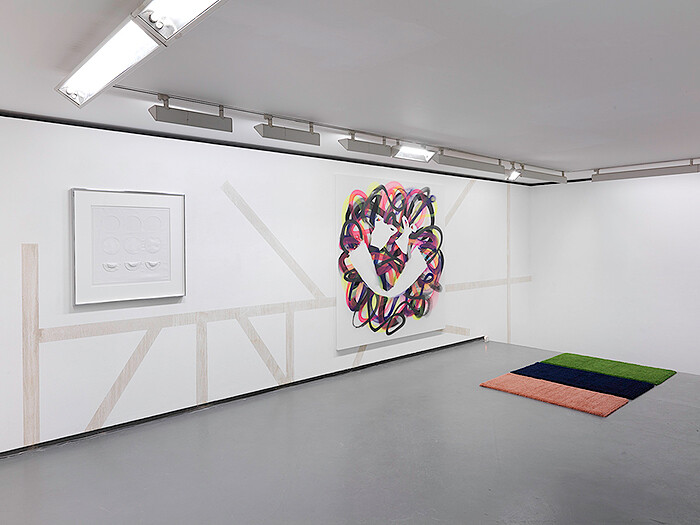
This is a strange exhibition. Not because it is bad, by any means. Even if it might not succeed at what it sets out to do, it nevertheless manages to achieve quite a lot. The continental sequel to a group exhibition that took place last summer at Bischoff/Weiss gallery in London, curated by the artist George Henry Longly (as is this one), “Glaze” features much of the original and multitudinous cast from its former flowering as well as some new additions. But just what does the show set out to do? Judging from the press release, a lot. Maybe even too much. References range from Foucault’s notion of heterotopia to postmodern design to the radically analytical French painting movement from the late 60s Supports/Surfaces. (Nevertheless, I should state that this show rapidly evolved beyond my dismissive first impression of it, which was: “Artist curates friends,” and which is, just for the record, not necessarily a bad premise for a show). That said, the general gist seems to be a bid for a domestic art which willfully inhabits a grey area between decoration and utility and which is somehow context specific. Whether or not all the more than twenty-five pieces …
May 27, 2012 – Review
Thomas Bayrle
Lara Sarcevic
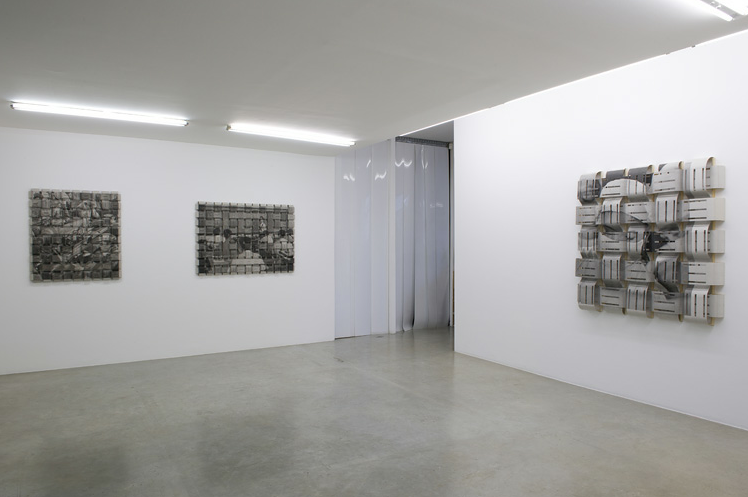
For his second exhibition at Air de Paris, Thomas Bayrle presented three series of works from different periods of his career. Following a logic of inverse chronology, the exhibition proposed a progressive dive into the history of Bayrle’s work, from his most recent grey cardboards to his more colorful paintings, resulting in a panorama of the meticulous aesthetic research that crosses the decades of Bayrle’s artistic practice. Crosses, or one should rather say, criss-crosses, for Bayrle’s approach is criss-crossed with one essential thread, namely his taste for interlacing, networks, and patterns directly inherited from his craftsman’s know-how: as a young employee of a weaving factory, he learned what would later become his trademark visual code delineating individual and collective experience.
The first pieces encountered were the loosely intertwined cardboard strips silkscreened with black-and-white photographs from iconographic propaganda material from Mao-era China. The pieces Workers (Sign for Earth) (2005), School (Sign for Container) (2005), and Barefoot Doctor (2004) presented three topical symbols of bygone communist societal ideals. Mountain Climber (Sign for Sun) (2005) took a more romantic turn on national glorification, depicting a high mountain landscape sprinkled with adventurous climbers.
Although the political intentionality of such images can be easily deciphered, Bayrle’s approach …
April 26, 2012 – Review
La Triennale, “Intense Proximity”
Chris Sharp
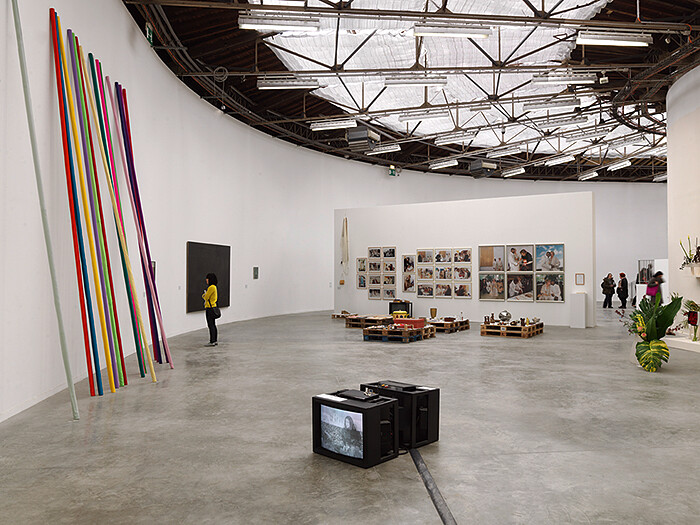
Whatever one may say about this exhibition, it cannot be denied that it possesses the virtue of necessity. This sense of necessity is made all the more evident by its contrast with the ignominious and highly anachronistic nationalism of the last two vague and ultimately superfluous triennials, both of which were limited to artists of French origin or living in France, and which were consequently less motivated by any real or imagined stakes than a desire to oxymoronically assert France’s relevance on the international scene. Coherent to a fault, this monumentally ambitious triennial has more elevated objectives in mind: it seeks to respond to the complex cultural exigencies, multifarious ethnic tensions, and artificial post-national dilemmas of its current French, European and international context, while playing off of and taking a deep bow to France’s rich anthropological heritage. Organized under the matter-of-fact stewardship of Okwui Enwezor with the assistance of curators Mélanie Bouteloup, Abdellah Karroum, Emilie Renard, and Claire Staebler, “Intense Proximity” is essentially predicated upon the following global and post-colonial predicament: what happens when the distance between the colonizer and the colonial subject, or, in broader strokes, near and far, visible and invisible, collapses? This leads to what Enwezor identifies …
October 24, 2011 – Review
FIAC!
Caroline Soyez-Petithomme
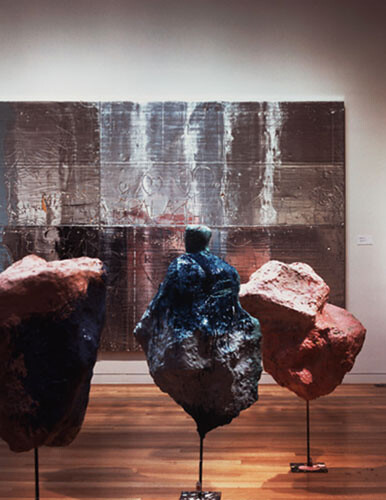
Following the opening of FIAC on Wednesday, positive feedback confirmed a strong start. Perhaps a little dazed after the opening, a few dealers–such as Isabelle Alfonsi, co-founder of Marcelle Alix with Cécilia Becanovic–scattered to deal with collectors and other VIPs scanning everything in the booths. Marcelle Alix took part in the easy-to-miss galleries on the upper floor, a space they shared with the Lafayette section. For the third year, the Groupe Galeries Lafayette sponsored ten emerging galleries at FIAC. As noted by Laurence Périllat, head of Groupe Galeries Lafayette’s corporate patronage department and also in charge of developing the private arts foundation project due to open in Paris in 2014, the prize was awarded to a female artist for the third year running, a point the company is proud of, particularly when considered alongside the Prix Marcel Duchamp which nominated only male artists this year. Lafayette’s awarded project is then purchased by the collection of the Groupe Galeries Lafayette. Helen Marten (b.1985), represented by Johann König won the prize this year and will realize a solo exhibition in October 2012 at the Palais de Tokyo.
The Parisian artistic landscape is growing up and has become more diversified, particularly via the creation …
July 22, 2011 – Review
Anri Sala
Vivian Sky Rehberg

Guests were asked to bring their sturdy invitation cards, perforated with a code containing four seconds of music (Invitations, 2011) to Anri Sala’s opening at Galerie Chantal Crousel. Throughout the evening, those cards were fed into a barrel organ in the courtyard, which played familiar notes in a discordant fashion. Shortly after I arrived and handed over my card, a few older fellows toting brass instruments joined the festive crowd from off the street and all but overwhelmed the tunes eking out of the organ. It was only when these two musical cultures began to spar that the title of Sala’s chosen song hit me: “Should I Stay or Should I Go” by The Clash.
Perhaps then, it’s no wonder that the word “clash” has stuck in my head, just like the band’s refrain, with respect to the body of work presented here. Sala’s show is one where chance and orchestration collide, and one that mobilizes our senses in order to attune us to questions of space and place, beginning with a most basic contrast: to the left of the entrance, the space is darkened; to the right, it is fully lit. Drawn to the dark side, one finds two works …
January 31, 2011 – Review
Michel François at kamel mennour, Paris
Chris Sharp
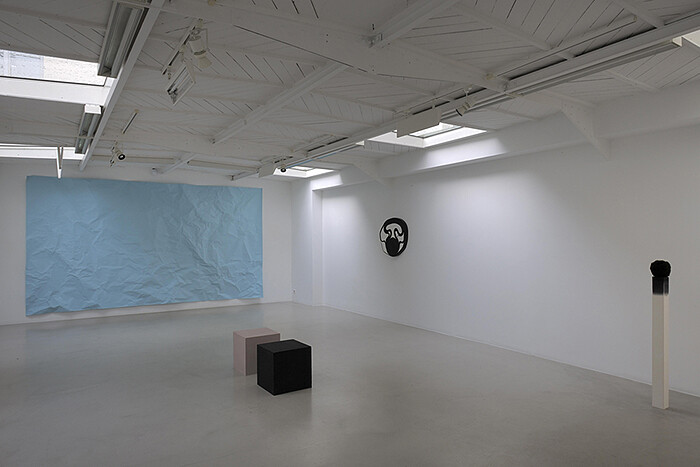
Upon first glance, an erotic reading of Michel François’s work might at seem a bit unorthodox, but with all the tension, indexes of expenditure, and sheer materiality coursing through his first solo show in Paris, such a reading is, at least in part, inevitable. For while the Belgian Brussels-based artist is primarily known for his preoccupations with contamination, physics (gravity and magnetism) and teleological processes as incarnated in plastic forms, the body, it seems, is never far from what he does. Its presence is sensually lurking, both literally and metaphorically, but never without a touch of absurdity among the thirteen works on view here.
Some of the most literal examples of this would include Contamination, (2006) and Instant Gratification, (2010). The first is comprised of three pairs of wooden apples, which have been partially carbonized, collocated together, dragged across a broad expanse of wall at different heights, and then nailed there—their traces blackly blazing behind them like testimonies to the shared sin of carnal communion and consequent exhaustion. Resembling a round silver splotch, the ironically titled Instant Gratification is the byproduct of incrementally poured aluminum, whose resultant integer is then hung on the wall. The melted metal is as suggestive of …
November 3, 2010 – Review
Abraham Cruzvillegas’s "La Petite Ceinture" at Galerie Chantal Crousel, Paris
Chris Sharp
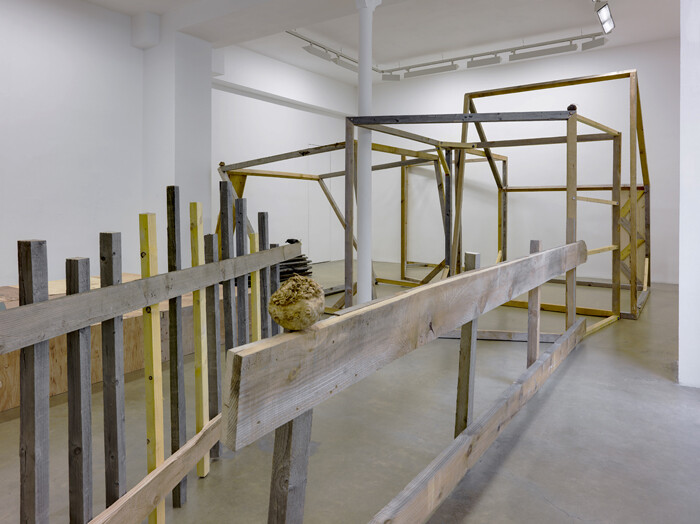
When you consider that Devo stands for “devolution”—the band’s neologism for the dysfunctional, herd mentality of modern society—you begin to get a sense of the dialectical complexity that underpins Abraham Cruzvillegas’s exhibition. Among the handful of curios that can be found in the voluminous, photocopy publication that accompanies this exhibition are a couple of black-and-white thumbnail images of the band Devo. Now it might not be immediately apparent what an iconic new wave band has to do with a subjective investigation of the industrialized version of medieval, fortified walls, otherwise known as la petite ceinture (“the little belt way”) in Paris. (But perhaps Devo’s ground-breaking geekdom can only but inform the unstable inside-outside binary essentially at stake here.)
For the artist’s first solo exhibition at Galerie Chantal Crousel, he has filled the entire main gallery space with a circular, quasi-architectural construction, made exclusively of found materials such as scraps of wood. The open, somewhat labyrinthine, structure is at once reminiscent of a skeletal favela, a modernist stage set design or, finally, a rather vast, wonky, constructivist sculpture. Its transparent construction and seemingly ramshackle composition represent both a symbolic ideal of interior-exterior porosity and a practical reality of fabrication, indissociable from the …
October 25, 2010 – Review
FIAC – International Contemporary Art Fair, Paris
Adam Kleinman
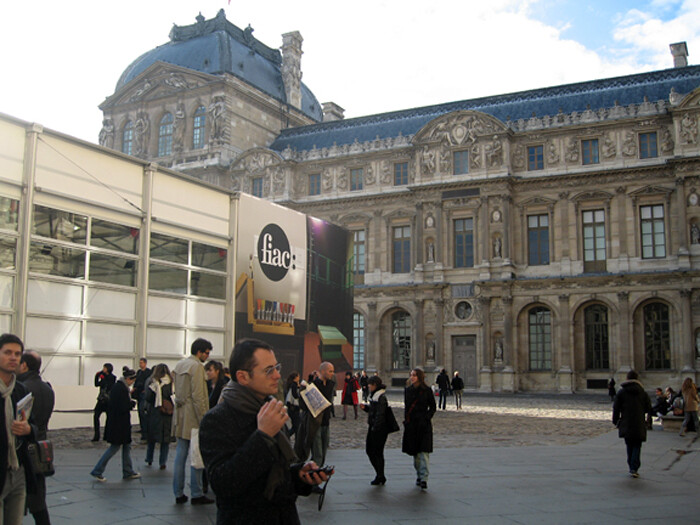
Der Kehlkopfverschlußlaut singt.
—Paul Celan
Considering the stigmas of alcohol and its abuses, advertising such products can be tricky. Cleverly, Ricard hit upon an idea: sponsor an eponymous prize at an art fair, throw a party for the winner, and then partner with the Pompidou to donate a work to the collection as the reward. With each step, the sponsor advertizes obliquely as the “class” of high art adds cachet to a cheap drink. An art fair, by definition, is a private affair, a purely commercial enterprise. However, what is curious today is that art fairs have also become expanded economic engines outside of the “art world” through their great elasticity for partnerships.
Ricard is not the only sponsor in on this game: planes, Air France; VIP chauffeured cars, Audi; lodging, Hotel Adagio; public art, the Tuileries Garden and the government. Even though the latter is a public-private partnership, there isn’t much to get upset about. This “show,” where galleries put out their crowd pleasers is just that—crowd pleasing. Capitalizing on this mass demographic, many major art institutions set their calendar for a knock-out show—just in case a few collectors and the like are in town—like, for example, the Adam McEwen curated exhibition …
June 30, 2010 – Review
Goldin+Senneby at Kadist Art Foundation, Paris
Jennifer Teets
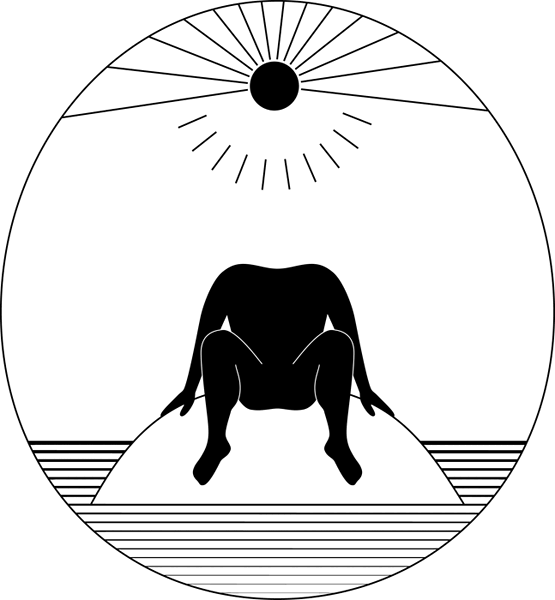
“For ‘Euro’ and ‘dollars’ one should write ‘xeno’ and ‘money’ respectively. The Eurodollar has long since shed its attachment to Europe. It is, in fact, no longer geographically located but circulates within an electronic global market which, though still called the Eurodollar market, is now the international capital market. And its attachment to dollars is denominational rather than actual: not only can all currencies be swapped instantaneously in and out of the dollar, but there is also a growing volume of other instruments within this new market, such as Eurobonds, issued in Yen, Deutschemarks, Ecus and so on.”
—Brian Rotman, Signifying Nothing: The Semiotics of Zero (New York: St. Martin’s Press, 1987), pp. 87-107.
On June 6, 2010, the world woke up to a perplexing $2.6 trillion conundrum. The New York Times headlines indicated a whodunit mystery, “Debtors’ Prism: Who Has Europe’s Loans?” A lump of loans had gone astray along with the unnamable lenders to attribute them to. But could their origins simply disappear? Apparently so, according to investors, regulators, and bankers, provoking a whirlwind of finger-pointers amongst Europe’s financial leaders. This inscrutability, in all its severity, has sparked off spoofs throughout the world: poof, and the magic wand makes it …
Load more